

10 Cool Music Activities For Middle School

Are you looking for musical ways to engage your middle school students?
Do you get tired of the attitude you get from this challenging age?
I’ve taught music to all ages of learners, from infants to seniors (not the high school kid, either!), and the most challenging to me are those middle school students.
They walk a fine line between being too old to make the “baby” music and being too immature to handle the more complex and coordinated music activities.
I’ve asked around to love who love that age group and pulled on my own experience to come up with these 10 cool music activities for middle school to use in your class right now.
Middle school music activities need to leverage their interest in “mature” material while acknowledging and allowing them to explore their own personal interests and work in their peer groups. My favorite activities include:
Create A Body Percussion Performance
Research an interesting musician, record funny voices, write a rap, compose a movie or video game soundtrack, build a beatbox, learn to play piano, musical instrument bingo, discover a new culture of music.
Let’s look at each of these briefly.

Save time with these 60 FREE Music Resources to use in your room right away!
Stop searching the whole internet to find good activities. I’ll help you cut to the chase with my favorite 60 FREE resources.
Table of Contents
I’ll give a brief description and links to resources for each of these elements.
You may be able to find other resources along with the same type of activities and if you do, go for it!
These are just the ones I and the others I talked to tend to use.
Disclaimer: Links in this article may be affiliate in nature, which means we earn a small commission if you click and purchase at no extra cost to you. Thanks for supporting our content!
Middle schoolers do like to move, get creative, and work together.
But they need some inspiration to do so first. They also need some structure.
I start this activity by showing them some Stomp videos.
This video is one I enjoy, and so do my middle school students:
Afterward, we do a discussion on how they built their beats and what instruments they chose to use.
Then, I split students into groups of 3-5 and ask them to come up with their own.
If my students need more structure, I’ll give them some cards with pre-made rhythms on them to choose to use.
Otherwise, I like to let them get as exploratory as possible. It’s more interesting that way!
Then, we record their presentations or simply share them with the other groups.
If they feel like getting advanced, you can always have them come up with choreography while they make the moves.
Nothing gets a middle schooler more engaged than letting them choose what they get to do.
I often do a unit where students may do research on one of their favorite musicians or an interesting musician from a broad list.
Note: Always approve the musician before they start to do the research.
If you feel more comfortable, consider making your students use SafeSearch to do their research.
This way, the material they see is always school-appropriate.
Then, have students present in some way.
It can be as simple as Google Slides (which most kids know how to use now anyway) or get creative by asking them to make a video of themselves acting as the musician would.
Let them have fun!
This one is just plain silly, but I love it and so do the students.
Assign a list of nursery rhymes or children’s books with a strong, steady beat.
Yes, you heard me right.
Then, ask them to memorize or practice saying the words in tempo.
Hold on, don’t skip ahead to the next one yet.
Now, have them record themselves using the Voice Spinner on Chrome Music Lab or another voice-altering program.
Then, they get to explore making their voices sound funny.
Some of the results are downright hilarious.
Yeah, rap is here to stay.
There are some I like (hello, Hamilton!) and much I don’t.
But just because we don’t like it doesn’t mean we can’t use our students’ interest to motivate them.
Ask your students to write a school-appropriate rap in small groups or on their own.
I’ll readily admit: I’m not the best at coming up with this plan on my own, so I use this one to help me out.
Pick a short video or simple video game to feature.
Remove the soundtrack (or just hit mute!).
Ask the students to compose their own using GarageBand or Flat.io or something.
They love to engage in stuff like this, especially since they’ll feel some ownership.
Use this Paint Composer program for a retro video game sound.

Beatboxing and building layers is another great way to get some creativity going.
Whether you build layers or use an automatic one like Incredibox , it’s fun for the middle school students to build and share some cool patterns.
Playing piano is something pretty much every person in the world wants to do.
With the technology and programs out there, it’s never been easier.
I’ve used Flowkey with a ton of success.
The learning tools are easy to use, and they have thousands on thousands of lessons for all ability levels.
Bingo is a blast, and I think it’s critical for students to know what the different instruments are.
I hate when I hear a student describe how awesome a saxophone sounds, only to realize they were actually talking about a tuba.
There are a ton of these programs and printables out there.
This one is my favorite free one.
Middle school students love competition, especially if it’s couched in engaging online and digital formats.
Kahoot is my favorite of these to use, and most of the features are free.
Check it out at the link.
Along the same line of researching a musician, it’s great to have students team up to research and present about different cultures of music.
Use the same resources, yes, including YouTube.
You’ll be surprised what you may learn too!
Cultures to consider are:
- Irish/Celtic
- African (it’s not all one style, check out the different tribes and areas)
- Native American (same thing as with African)
- Pacific Islander
- Central American
Obviously, there are many more, but this should get you started.
Final Thoughts
This age level is tough for a lot of teachers, but hopefully, these music activities for middle school give some ideas on how to start some units and projects with higher levels of engagement. (You may also want to check out our music activities for high school .)
If you’re looking for other activities, check out more in this series:
- 11 Great Music Activities For Toddlers
- 11 Easy Music Activities For Preschool
- 8 Inspirational Music Activities For Elementary Students
Zach VanderGraaff
Zach VanderGraaff is a K-5 music teacher in Michigan with 12 years of experience. He's the President of the Michigan Kodaly Educators and founder of the Dynamic Music Room.
Recent Posts
How To Set Up A Trombone: Assembly Steps Made Simple!
Putting a trombone together looks like a tough task for those who've never done it before, but after a couple of times doing it, it's quite easy. In this post, I'll go the steps I and many other...
Three Game-Changing Tips for Doublers of the Flute
This is a guest post from the amazing Jane Cavanagh! At rehearsal last week, the conductor of a Sydney-based band I play the flute in, excitedly informed me, "Hey Jane, I arranged a new piece for...

- All topics A-Z
- Grammar
- Vocabulary
- Speaking
- Reading
- Listening
- Writing
- Pronunciation
- Virtual Classroom
- Worksheets by season
- 600 Creative Writing Prompts
- Warmers, fillers & ice-breakers
- Coloring pages to print
- Flashcards
- Classroom management worksheets
- Emergency worksheets
- Revision worksheets
- Resources we recommend
FREE Music Worksheets
Here you can find worksheets that talk about music . there are many different aspects to this topic so you will see a lot of variety on the worksheets available in this section. some worksheets talk about musical instruments, musicians, and the music industry while others focus more on lyrics. take a look at some of the 122 worksheets in this section to find one that fits your class. this music worksheet is a very creative way to get your students to practice using the present continuous. due to the fact that the songs are a little older, your students might have to do some research to find the answers or you could use the worksheet as a model for your own that includes more recent titles. there are other worksheets to choose from if your students are working on something else and you are welcome to post your own worksheets too almost everyone enjoys listening to music so whether you decide to use songs in your lesson for a listening activity or introduce vocabulary related to musical instruments, your students will certainly be interested in this topic. listening activities that use songs, while fun, are often very challenging for students because the speed is usually much faster than the one you use when speaking in class. keep this in mind when making your song selections. the type of music you discuss in class will vary depending on your students. in japan, for example, talking about j-pop artists and songs would be perfect for your high school students but not such a good fit for your older adult students. try adding variety to your lessons but talking about music. read more... ...less.
- Copyright 2007-2021 пїЅ
- Submit a worksheet
- Mobile version

Music Listening Activities: Cover Song Comparison
Printable music listening activities. Have your students compare cover songs to their originals by analyzing musical elements.

5 Rhythm Games for your Elementary Music Classroom
Are your elementary school music students struggling with rhythm reading? The best way to make your lesson plans engaging is always to make them fun – which is why these 5 rhythm games make great teaching tools!

Setting Expectations When Teaching Ukulele
Before teaching students how to play the ukulele, it is important to first establish clear expectations and routines to help maximize their success. Learning to play the ukulele can engage a lot of excitement in the classroom, so you want to ensure that your music students have clear instructions to be attentive and respectful.

Organizing Ukuleles in Your Music Classroom
Organizing Ukuleles in Your Music Classroom Just starting to teach ukulele? You’ll quickly realize that organizing your ukuleles in your music classroom can be a

Copyright 2023 Teach From The Stage. All Rights Reserved. Website by MargaretSlater.co
- Skip to primary navigation
- Skip to main content
- Skip to primary sidebar
Teaching Expertise
- Classroom Ideas
- Teacher’s Life
- Deals & Shopping
- Privacy Policy
25 Invigorating Music Activities for Middle School
June 20, 2023 // by Eileen Zajac
Middle school music can be quite the class! Middle schoolers are going through a lot of change and for some of them, confidence in the singing department just isn’t it. Finding games and activities that everyone in your middle school class will feel comfortable playing can be challenging.
Thankfully, the veteran music teachers at Teaching Expertise have put together a list of 25 unique and overall, very engaging activities for your middle school music classroom.
So if you’ve been tirelessly searching for activities, we can ensure you’ll find something if not multiple things on this list to bring into your classroom.
1. Music Mind Map

Mind maps are a great way for students to show everything they know about a topic or subject. Using Mind Maps throughout the year or as an informal assessment will help to develop your music students’ understanding.
Learn More: Pinterest
2. Music Creator Task Cards
These task cards can be used in any music classroom. It’s a popular music activity in the middle school music classroom. In the early days of the school year be sure to have a demonstration in a class of exactly to use these task cards. That way, students can be independent throughout the year.
Learn More: That Music Teacher (Instagram)
3. Learn Clef Notation
If your middle schoolers love card games, then this is the perfect way to teach the Clef Note. Sometimes difficult concepts can be rigorous to teach, but not through a fun game like this. Download the game for more detailed instructions!
Learn More: Musical Interactions (Instagram)
4. Music is Art
Taking time to create art in the music classroom may hold more benefits for children than we’re aware of. Having students create their own music charts around the classroom will not only get them to practice the shapes of different notes but will also make the classroom more inviting overall.
Learn More: Colorfully Playing the Piano (Instagram)
5. Music Dice
Bring some dice games into your music education! As a middle school music teacher, it can often be challenging to find engaging aspects of music. Thankfully, these music dice will be a great way to practice 3-8 notes.
Learn More: Rivian Creative (Instagram)
6. Let Them Play!
If your school doesn’t necessarily have a large selection of musical instruments, that’s okay! Work with students to come up with some creative ideas to improvise different musical instruments. See what sounds they can come up with and what notes they can actually follow.
Learn More: Bourne Ms. Music (Instagram)
7. Music Twister
Music twister probably works best in small groups. Incorporate this game into some of your music lessons. Students will love getting all twisted up and you’ll love that they know exactly where to play their hands and feet!
Learn More: Baroque Music Teacher (Instagram)
8. Rhythm Dice
Have students make rhythm patterns using these dice. The dice are simple enough to make – just purchase a bag of blank dice, like these , and draw different notes on them. Have students roll the dice and make a rhythm! These can be used in small groups or with the entire class.
9. Close Listening
Help your students boost their musical skills by boosting their listening skills. You can create different close listening graphic organizers for various genres of music. Integrate them into your classroom for performance or for a performance found on Youtube! Your students will love it.
Learn More: Cathy’s Choir Class (Instagram)
10. Music Books
Even your oldest students will appreciate listening to a story. Whether you’re in a digital classroom or a real classroom these books are a great intro to building a strong and positive classroom environment.
Learn More: 23 Music Books for Kids to Get Them Rocking to the Beat!
11. Musical Artist Research
As funny as middle schools may be, researching is an important part of the overall education for children. Bringing it into the music classroom has many advantages for children. One of them simply being, understanding the history of music.
Learn More: Singing Along with Mrs. P. (Instagram)
12. Musician of the Month
Introducing your pupils to different musicians throughout history is an important part of middle school music education. With this in mind, why not dedicate a wall solely to this? Hang a few ready-made posters or rope your pupils in by having them craft their own!
Learn More: PinIMG
13. Creative Classroom
Bringing all of your student’s creative sides out might just be one of the most rewarding feelings. Give your students a project they’ll be excited about, like coloring and decorating these music notes!
Learn More: Teachers Pay Teachers
14. Melody Match
Help your students show their knowledge with this melody match activity. Students will love that they can show off everything they’ve learned throughout the unit. This will also help you to know and understand exactly where students are in their knowledge.
Learn More: St. Benedict Preparatory School
15. Rumble Ball
Rumble ball is one of those cool music activities that students will be constantly asking to play. Although in the video, Rumble Ball is played with certain instruments, it can easily be modified to fit the equipment that you have in your middle school music classroom.
Learn More: World Drum Club
16. Pass the Beat
This game is definitely challenging, but in a way that students will love. If your students enjoy battle music activities this might be a good one for transitions or if there’s a bit of time left at the end of class.
Learn More: Joel Copeland
17. Rhythm Cups
Middle schoolers went absolutely crazy for the “cup song” a few years back, who am I kidding, they’re still obsessed with that rhythm. Spice up your music classroom by giving different groups, different rhythm cups to learn! These rhythms are pretty easy to learn and even easier to perform.
Learn More: Music Room UK
18. One Hit Wonders Lesson
Teaching your students about One Hit Wonders is so much fun! Have students create their own One Hit Wonder books. This project will include research and bring out your student’s creative side!
Learn More: The Fun Music Company
19. Rhythm 4 Corners
Four corners is a game that all grade levels look forward to playing. Your older students will have found different ways to be more and more stealthy throughout the game. Making it that much more challenging.
Learn More: Becca’s Music Room
20. Draw to Music
Play some music and have your students comprehend what they’re hearing into a beautiful drawing. Switch the music to intensely different songs to get a lot of variety in the artwork. It will be beneficial to students to listen and be able to comprehend what they hear in a drawing. It will also be super interesting and exciting to compare student interpretations.
Learn More: Kerri Bevis
21. Music Discussion

If you have a music classroom that doesn’t have many materials, creating lessons can be invigorating at times. In this case, it’s important to just get your kiddos to chat about music. Use these cards to initiate musically revolved conversations.
Learn More: Word Wall
22. Music Elements

Help your students with understanding their music elements with this fun and engaging online game. Students can complete this independently, in small groups, as homework, or as a whole class.
23. Extra Beat Take a Seat
This game is so much fun! It’s especially fun for middle school classrooms that are tricky to get engaged in. Have students follow along with the video and have fun! Make it challenging or make it a competition within the classroom.
24. Music Class Escape Room

Escape rooms have seriously become more and more exciting for students. Bring an escape room into your classroom for a fun music game that will both aid students in their understanding of different musical terms and also help them to be a little more engaged.
Learn More: Midnight Music
25. Music Note Yahtzee
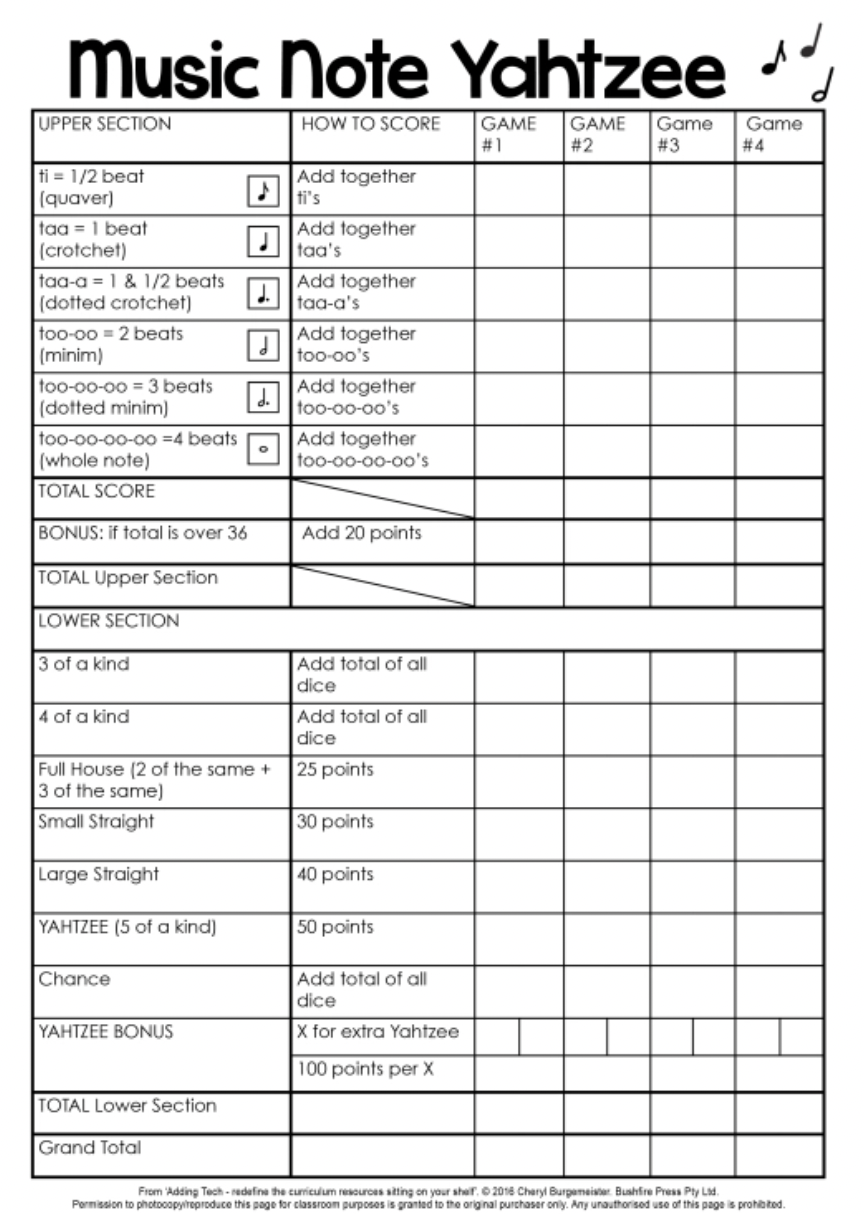
This is where those white dice will come in handy yet again! Make your dice with different music notes on them. Have students roll the dice and play an all-time favorite class game – Yahtzee. This game is both easy to learn and even easier to play, perfect for the middle school classroom.
Learn More: Mrs. B Music Room
By continuing to browse the site you are agreeing to our use of cookies and similar tracking technologies described in our privacy policy
Your membership is expiring soon
Your membership has expired, you have tri-m advisor level access, creating a middle school general music curriculum from scratch.
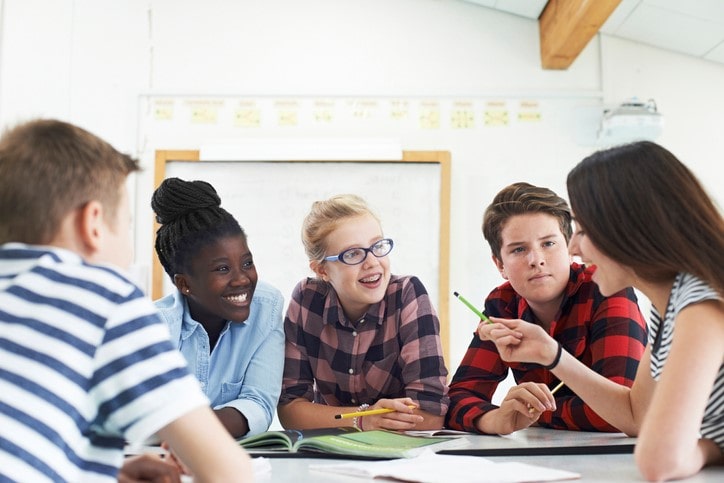
/ News Posts / Creating a Middle School General Music Curriculum from Scratch
By Toni Garza, sponsored by QuaverE d
Join NAfME today
How do we instill a lifelong respect for music in our middle school music students?
When asked to create a Middle School General Music (MSGM) course for their students, most teachers ask two questions: Why do I need to add another course to my already jam-packed schedule? And what am I supposed to do with middle schoolers in general music? These questions are valid and deserving of discussion, but let’s also look at ways MSGM can be of help rather than a hardship.
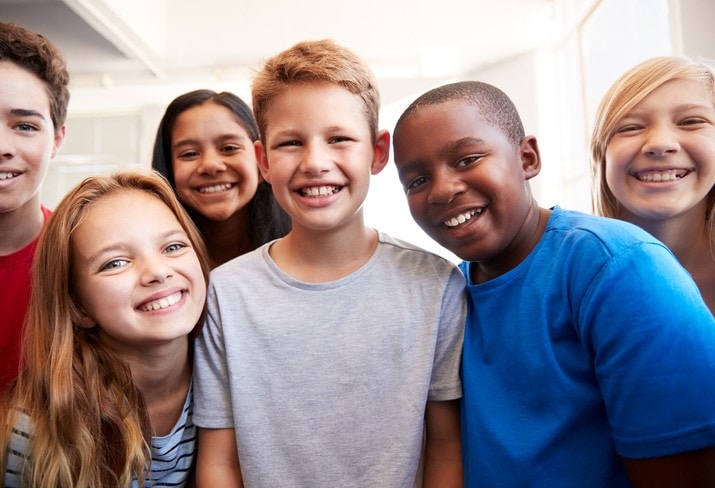
iStockphoto.com | monkeybusinessimages
What Is Middle School General Music?
Perhaps the most exciting and daunting aspect of MSGM is that there is no standard curriculum . Obviously, there are the national standards to which we may adhere, but the content and activities are up to the teacher. This challenges us as educators to find fresh, innovative ways to teach music, and the possibilities are truly endless.
In my experience, MSGM gave me the time I didn’t have in my ensembles to dig deeper into musical concepts with which my students needed more time and practice. A common misconception is that MSGM needs to include a piano lab or iPad stations. While those resources can be valuable assets, I assure you they are not necessary to have a meaningful musical experience.
Why Is General Music Important in Middle School?
Middle School General Music offers a unique opportunity for educators to stretch their own creativity in planning and instruction. Since MSGM is not a performance-based class, it gives teachers an entirely new group of students to influence. Think of it as educating the next generation of music consumers.

iStockphoto.com | MachineHeadz
Let’s take a closer look at how MSGM brings benefits to teachers and students alike:
- In MSGM, we have the ability to empower students who may not want to perform but are interested in other aspects of music. This could lead to conversations about musical styles and allow students the opportunity to voice their opinions. In addition, students may share their musical preferences with one another and develop an appreciation for the differences and diversity amongst themselves. This is developmentally appropriate for middle school-aged students who are in the process of discovering their own interests and identity. So MSGM gives teachers the opportunity to reach new students, using a tool that everyone understands and appreciates: music!
- MSGM expands and exposes a larger group of students to music they may otherwise never hear and can also open up fresh, new opportunities that can lead to the discovery of other career paths within the music industry. This is an opportunity to inspire a generation of new music consumers who demand a higher caliber of music on the radio and more importantly, instill a lifelong respect for music in all of our students.
How Do I Set Up My Curriculum?
In my experience, project-based learning has been the most effective curriculum strategy in MSGM. It requires a lot of hands-off teaching which can be difficult for those of us who are accustomed to conducting a rehearsal. However, presenting your students with tasks and giving them the freedom to define their learning style to achieve a goal can be very empowering. The creativity that emerges from these projects also far exceeds an ensemble rehearsal by giving students a safe space to try new things and be responsible for their own learning.
Does the thought of leaving middle school students alone to be responsible for their own learning sound scary? It is. I was very frightened the first time I implemented a project-based lesson into my classroom. However, I was shocked to find that when I set the parameters and gave my students clearly defined deliverables with specific due dates, they followed through.
How Do I Create an Engaging Project-Based Lesson?
As the teacher, you know your students best and can decide what project topics will be of most interest. For example, I noticed many of my students resisted listening to various types of music, insisting that any styles other than pop, hip hop, and rock music were “boring.” I wanted to expose them to a variety of styles but knew that genuine interest was necessary to leave a lasting impression, so I asked them an essential question: Which style of music is the most influential? This not only required them to learn about various genres but also to define the term influential and defend their opinion. I gave them project goals such as:
- Learn about at least 5 different styles of music.
- Define the characteristics of influential music.
- From the styles researched, select one style of music that you feel is the most influential.
- Research at least 3 examples of artists and/or composers from your chosen style.
- Present your style and opinion of what makes it the most influential to an audience.
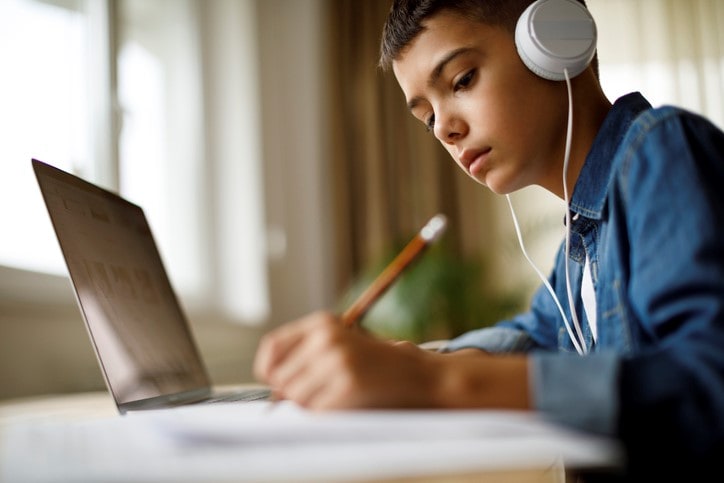
iStockphoto.com | damircudic
There were several other goals and due dates associated with this project. Each group had a checklist to ensure that they were meeting their project deadlines, and they were responsible for completing and submitting each task.
As a class, we also created a rubric defining how each group would be graded. I set the criteria on which they would be graded, but they were responsible for determining what each level entailed. For example, one category for grading was teamwork. The rubric listed several columns and proficiency levels that each group could achieve: Exemplary, Proficient, Emerging, and Needs Improvement. The students were responsible for defining each level, which gave them a voice in the evaluation process. The class was also able to discuss examples of each proficiency level to help them better plan their own project. When it came time to grade their project, I referred back to their own words and examples, giving them a sense of empowerment, ownership, and accountability.
Now that we have the background, let’s create the template. Remember that the beauty of MSGM lies in its flexibility, so please feel free to expand upon these ideas in your own classrooms. Always keep in mind this essential question: How do we instill a lifelong respect for music in our middle school music students?
Download the Creating Middle School Music Curriculum worksheet
About the author:

Did this blog spur new ideas for your music program? Share them on Amplify! Interested in reprinting this article? Please review the reprint guidelines .
The National Association for Music Education (NAfME) provides a number of forums for the sharing of information and opinion, including blogs and postings on our website, articles and columns in our magazines and journals, and postings to our Amplify member portal. Unless specifically noted, the views expressed in these media do not necessarily represent the policy or views of the Association, its officers, or its employees.
March 3, 2020. © National Association for Music Education ( NAfME.org )

Published Date
March 3, 2020
- Uncategorized
March 3, 2020. © National Association for Music Education (NAfME.org)
LATEST POST
Happy birthday, world, turn the lights back on, young person’s guide to the orchestra ">st. louis symphony orchestra’s digital young person’s guide to the orchestra.


5 Music Activities for Middle School to Make Lessons More Creative
Most humans naturally fall in love with music from an early age. We’ve all seen the way that babies and toddlers intuitively bob their heads along to the beat whenever a song is played. For many people, this early love of music lasts for a lifetime. However, that natural thrill that causes us to light up with excitement when we hear a fun song come on the radio can be lost over time when music begins to feel like “work.”
Anyone who has spent time in a music classroom knows just how true this can be! There seems to be a particularly difficult wall that is hit as music students approach the “middle school” years. The natural enchantment of music can be lost as older students begin to feel that practice feels grueling or uninspired. The phenomenon can be discouraging for music educators. However, pushing through is important when you consider the rewards for students. Research shows that music education offers the following benefits for learners:
- Improved memory.
- Stronger eye-hand coordination.
- Better study habits.
- More success with teamwork.
- Heightened mental processing and problem-solving capabilities.
Fortunately, just a little bit of creativity can bring a newer, more mature appreciation for music into the picture for students in middle school. If you’re looking for some creative ideas to keep preteen learners interested, it’s easier than you think. Take a look at five music activities for middle school to make lessons more creative!
1. Have Some Fun With Sounds and Voices
One of the most important aspects of becoming a musician is “finding your voice.” Students often don’t understand the value of developing their voices because they don’t yet see their voices as instruments . That’s why this first fun activity is so beneficial. In fact, what really works about this little project is that you don’t actually have to involve “song” or “music” at all to make it effective. Instead, the focus is on simply giving students a space for playing around with their voices with a little help from technology.
Let’s cover how this little exercise works! Have students record themselves reading popular poems, books or works of fiction. They can input the recordings into whatever software is available and accessible through your classroom. This can be anything from Audacity to GarageBand. Next, make a project out of editing what has been read by manipulating voices. Show students how the impact changes when voices are changed to sound scary, spooky, silly or miniature using anything from a monster voice to a chipmunk pitch! Have students reflect on the ways they can also achieve what the software program has achieved using their own vocal cords in a more subtle way.
2. Host a Group Rap Battle
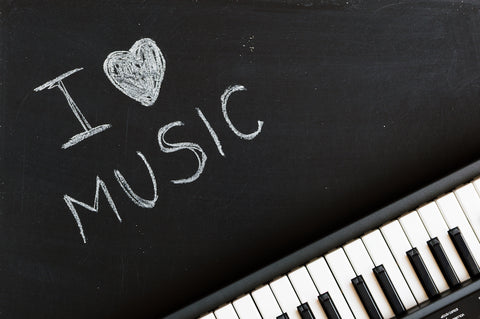
The purpose of this exercise is to help students to unleash their creative sides using a relatable, popular genre of music. This particular exercise also has a high collaborative factor. That’s important because it means that students can feel comfortable with getting creatively vulnerable without feeling like they are being singled out. On the technical side, the real purpose of this exercise is to introduce students to the concept of composing music without necessarily placing the ability to read music as a barrier to entry.
Start by splitting your students into small groups. You can also do this exercise with a single student if you provide one-on-one lessons. Feel free to select topics for raps ahead of time to build a theme while keeping more control over the lesson. Write the topics on the board for easy reference.
Next, you can introduce the “challenge.” Each rap that is composed by the groups must follow a rhyming scheme of your choosing. Let the students know that their “technical” scores will depend on how well they create consistent, obvious patterns that can be picked up on by the ear. You can give the “rap groups” a certain number of minutes to work together on creating one-of-a-kind, totally original raps using your rules. The performance comes next! Each group will perform their rap in front of the rest of the class. Ultimately, you will declare a “winner” based on categories like technical ability, teamwork and the ability to follow directions.
3. Host a Rhythm Festival in the Classroom
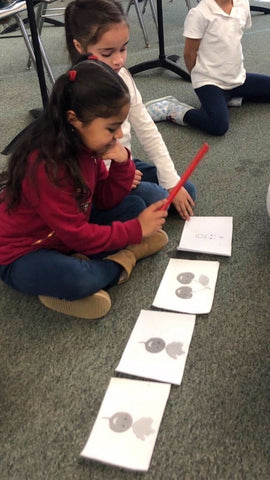
This is an activity that you can choose to do in a day, spread out over a week or incorporate into the entire semester. Getting into the origins of drumming is one of the best ways to drum up interest in music among middle-school students. More specifically, diving into the roots of African drumming can be especially appealing for students looking to connect to a very meaningful, satisfying form of musical expression. It can also be much easier to bring hand drums, boomwhackers and bucket drums into the classroom than it would be to try to source other types of instruments.
Prodigies Rhythm Collection
You can introduce the mechanisms of African drumming by showing videos of live performances. If you have experience in this genre, you can offer an in-class demonstration. Kids really respond to drumming because of how tangible and interactive this form of music can be. What’s more, it’s a genre that any student can get a feel for even if they struggle with some of the aspects of keeping time or learning fingering techniques. As a teacher, you may be interested to learn that drumming has been shown to provide social, emotional and stress-related benefits for children in classroom settings.
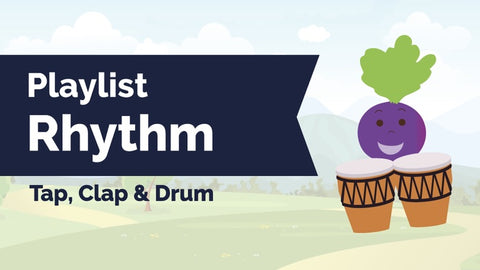
Play Rhythm Playlist
4. host a musical scavenger hunt for makeshift instruments.
Students can often lose interest in music because they’re not able to see that they are surrounded by a musical world. One of the best ways to awaken the awareness that we live in a world of music is to show kids how to see the music that is all around them. This is where a makeshift musical scavenger hunt comes in! The key to this activity is that you’re not actually looking for real musical instruments. Instead, students are tasked with finding everyday objects that can be used as instruments. Ask students to look for objects that can easily be used to create music as drums, bells, tambourines, chimes, maracas and gongs. If possible, have every student bring their one found object to class. You can then discover how to incorporate these “found” instruments together to create an “accidental” band!
5. Focus on the Top Song in the Country

This is an activity that you can choose to do on a weekly or monthly basis. The goal is to show students the mechanics behind the song of the moment that everyone is singing. Start by identifying the song that is the top song in the country based on music charts or downloads. You can then “wow” your students by breaking down the cord progression and arrangement of the song. This reverse engineering of something that is familiar will help kids to make the connection between popular music and music theory. This activity can be especially interesting for students who are interested in learning how to write their own music because it brings a “big” concept to a relatable place.
Some Tips for Introducing Creativity in the Music Classroom
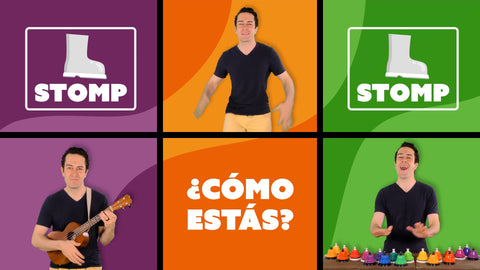
You may be looking for some creative ways to engage your students because you feel their attention slipping away as you dive deeper into what music learning looks like at the middle-school level. The big thing to remember is that keeping things relatable can help to turn what seem like very complex, abstract concepts into things that students can actually care about. Here are the main tips for igniting some sparks without throwing away the educational and challenging aspects of music education:
- Encourage kids to work on things together. Music is collaborative. You’ll find that students often derive inspiration from the enthusiasm of other learners around them.
- Accept that it’s okay to reach into “popular” music to get kids engaged. While the learning should definitely evolve past the pop songs of today, this can be a good place to start when simply trying to get learners to think musically.
- Be positive and prepared. Students in middle school are old enough to know when the adult in the room is discouraged and disconnected. Your own passion and enthusiasm can fill in a lot of gaps when it feels like everyone in the classroom isn’t syncing up with the concepts being presented!
The bottom line is that creativity often helps students to connect with what is being presented. When you allow kids to really dig in, they are able to discover the way music actually reaches into the real world around them! When kids see music as being a real and natural part of their environment, the anxiety and apprehension about moving forward with difficult concepts can subside more easily.

- WordPress.org
- Documentation
- Learn WordPress
- Members Newsfeed
25 Invigorating Music Activities for Middle School
- Middle School Education

Introduction:
Music education is an essential element in the curriculum for middle school students. Engaging in music activities can help students develop creativity, teamwork, self-expression, and critical thinking skills. Here are 25 invigorating music activities that can inspire middle school students and make their learning journey a memorable one.
1. Songwriting Workshops: Encourage students to write their songs to express their feelings through musical arrangements and lyrics.
2. Musical Chairs: Implement this classic childhood game by playing different genres of music to expose them to various styles.
3. Rhythm Circles: Have students create rhythmic patterns using body percussion, such as clapping, snapping, or stomping.
4. Lip Sync Battle: Organize a lip sync battle that allows students to mime along with their favorite songs while showcasing their performance skills.
5. Composition Showcase: Guide students through the process of composing original music pieces and then perform them for the class.
6. Improvisation Games: Provide opportunities for students to improvise melodies and rhythms using various instruments or voice.
7. Music Trivia: Engage students in a friendly competition testing their knowledge of music theory, history, and pop culture.
8. Movie Soundtrack Analysis: Analyze popular movie soundtracks and discuss how the music enhances each film’s emotional impact.
9. Concert Field Trip: Take your class to watch local symphony orchestras or bands perform live and later discuss the experience.
10. Music History Timeline: Assign each student a period from music history, and then have them create a timeline displaying significant events, composers, and pieces from that era.
11. Karaoke Day: Turn your classroom into a karaoke stage where students can sing popular songs and explore their vocal abilities.
12. Garage Band Practice: Form band groups within the class, allowing them to develop collaborative skills while practicing and performing together.
13. Instrument Demonstration: Invite professional musicians to demonstrate various instruments and their techniques.
14. Group Percussion Ensemble: Organize students into various percussion ensembles and have them create unique rhythms.
15. Digital Music Production: Introduce students to digital music software, teaching them the basics of creating electronic music or beats.
16. Music Bingo: Create a custom bingo sheet featuring musical terms, symbols, or composers for a fun, educational game night.
17. Choir Collaboration: Invite a local choir to perform with your students during a combined rehearsal or concert.
18. Music Careers Research: Encourage students to research possible careers in the music industry and present their findings through class presentations or posters.
19. Radio Show Production: Develop a classroom radio show allowing students to create segments on music education, new releases, interviews, and live performances.
20. Album Design and Review: Assign albums for students to listen to, design an album cover, and write a review providing their thoughts on the music.
21. Music Genre Exploration: Study various music genres from different time periods around the world through listening experiences and discussions.
22. Music Scavenger Hunt: Design scavenger hunts around the school based on musical clues or riddles relating to music theory and instruments.
23. Soundtrack Composition: Have students create original soundtracks for short video clips or animations using classroom instruments or digital tools.
24. Collaborative Songwriting Project: Pair with another class to compose new pieces using video chats or online platforms for remote songwriting collaboration.
25. Live Performance Review: Attend live performances as a group, then have the students compose critical reviews analyzing aspects like stage presence and musicianship quality.
Conclusion:
Implementing these engaging activities in your middle school music classroom can provide unique opportunities for exploration and growth in your students’ musical abilities.
Related Articles

Starting at a new school can be an exciting yet nerve-wracking experience…

Introduction: As middle schoolers transition into more independence, it's crucial that they…
1. Unpredictable Growth Spurts: Middle school teachers witness students entering their classrooms…

Pedagogue is a social media network where educators can learn and grow. It's a safe space where they can share advice, strategies, tools, hacks, resources, etc., and work together to improve their teaching skills and the academic performance of the students in their charge.
If you want to collaborate with educators from around the globe, facilitate remote learning, etc., sign up for a free account today and start making connections.
Pedagogue is Free Now, and Free Forever!
- New? Start Here
- Frequently Asked Questions
- Privacy Policy
- Terms of Service
- Registration
Don't you have an account? Register Now! it's really simple and you can start enjoying all the benefits!
We just sent you an Email. Please Open it up to activate your account.
I allow this website to collect and store submitted data.
- Grades 6-12
- School Leaders
FREE Poetry Worksheet Bundle! Perfect for National Poetry Month.
16 Great Websites for Teaching and Learning Music
Tell a story with music.
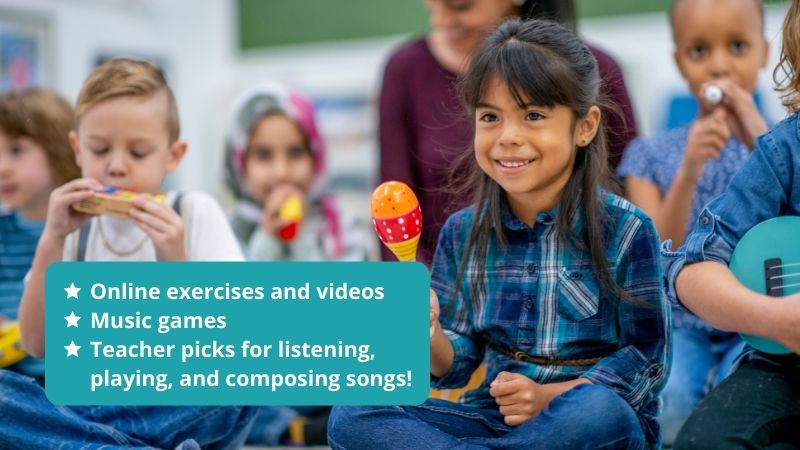
Music is the universal language that connects us all. Finding the right resources to share this magic with students is important but can be time-consuming. We’ve done the work to put together this collection of the best music websites for teaching and learning. Most of these are free and perfect for students of all grade levels.
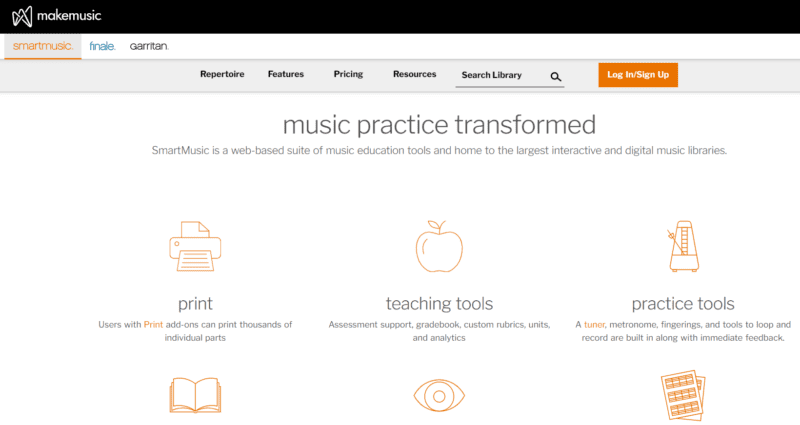
SmartMusic is a web-based suite of music education tools and home to the largest interactive and digital music libraries.
Music Tech Teacher
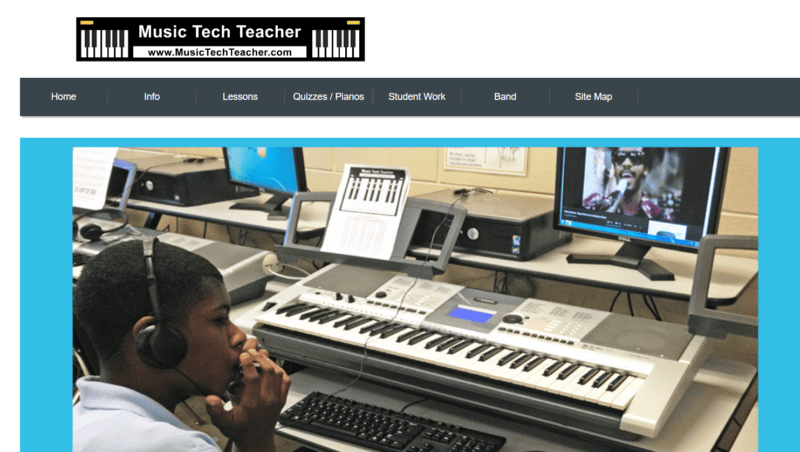
This site includes student projects, videos, photos, and music compositions from former students in the Birmingham City School System. The site also has music technology links, quizzes, resources, and information for music teachers interested in using technology to enhance music instruction.
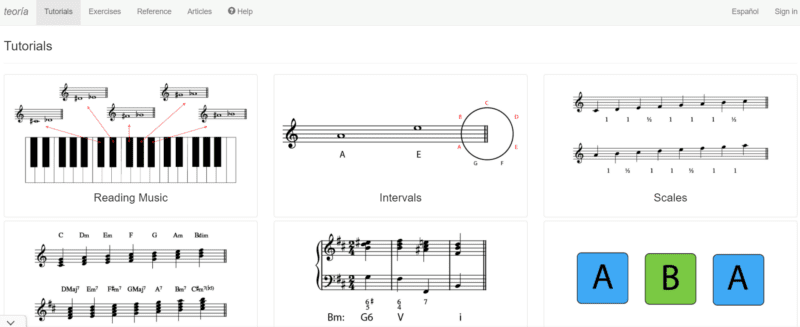
Interactive website featuring exercises that support MIDI keyboards and tutorials on reading music, harmonic functions, and more.

This very simple online ear training website has lessons on intervals, chords, scales, cadences, jazz chords, note location, and perfect pitch.
New York Philharmonic at Home

From teaching guides and kids’ activities to music videos and community projects, there’s a digital resource waiting for you on this comprehensive site.
PBS Music Games
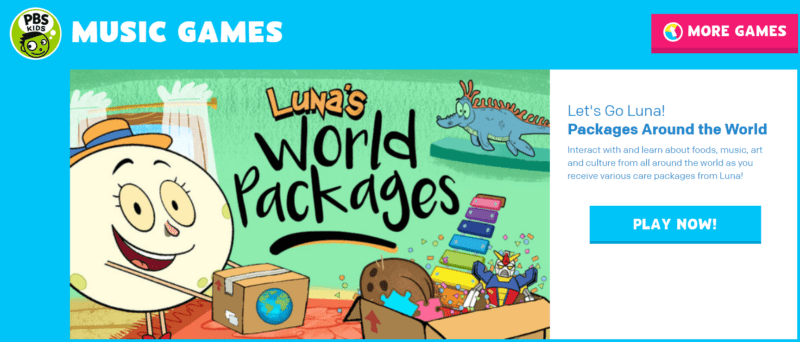
This colorful and interactive page introduces young kids to musical concepts through fun games and activities, including Feel the Music, Music Maker, and Cyber Pattern Maker.
K-12 Resources For Music Educators
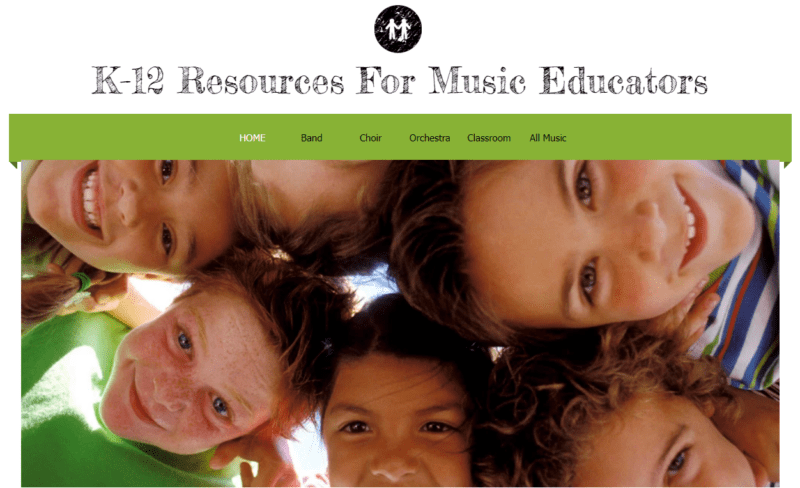
This website includes extensive lists of resources for music teachers in five categories, including band, choir, orchestra, classroom, and general music education.
TeAchnology
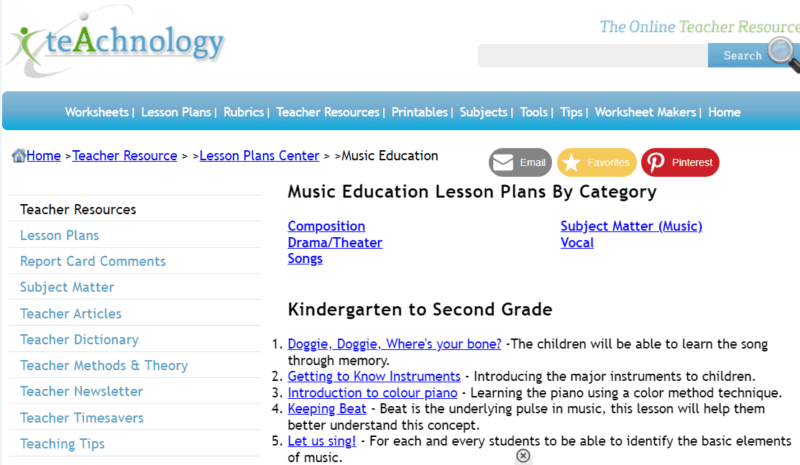
A collection of links to resources and music education plans by category. One of our music websites that works for students of all grade levels!
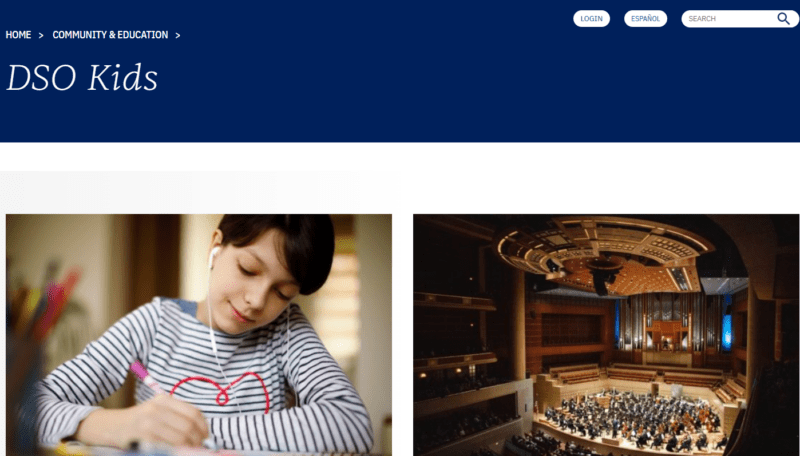
The Dallas Symphony Orchestra has created a wonderful hub for music students, including games and activities, an orchestra seating chart, a youth concert series, and Philharmonia Fantastique: The Making of the Orchestra , a 30-minute animated film that explores the connection between creativity and technology.
The Kennedy Center

The Kennedy Center’s Digital Resources Library allows you to the arts into your educational practices with our robust collection of free digital learning resources and arts-based lesson plans.
SF Symphony Music Connects
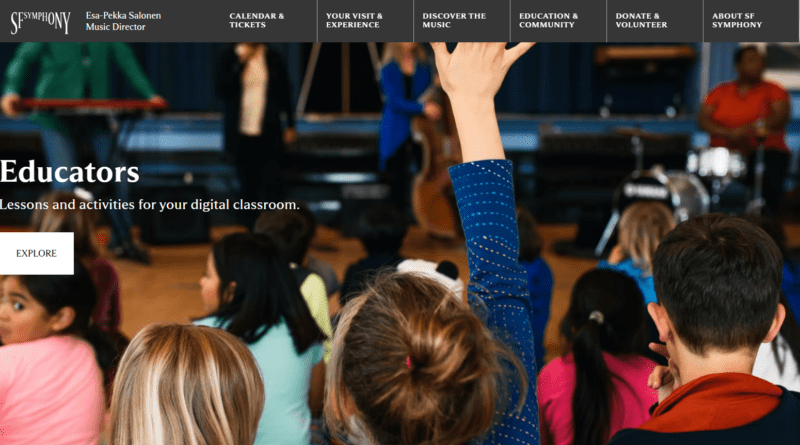
This site offers fun facts, activities, and lessons that support music education at home and includes resources for teachers .
Classics for Kids
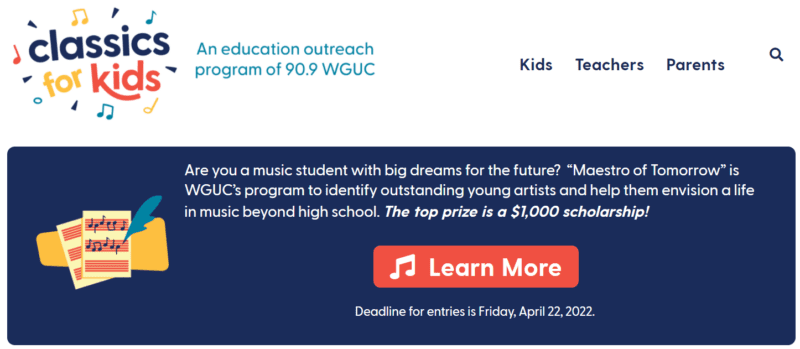
In addition to the fantastic activities, games, and lesson plans on this site, students can take advantage of the “Maestro of Tomorrow” program to identify outstanding and support young artists. The top prize is a $1,000 scholarship!
North Carolina Symphony
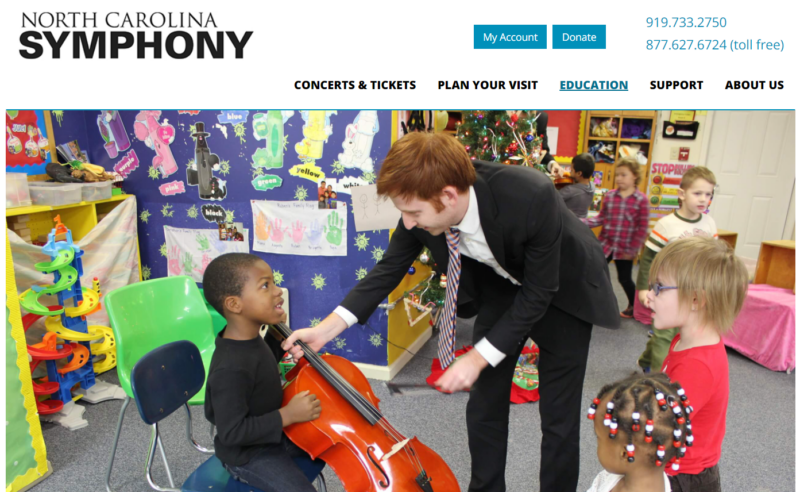
Educators can access video and curriculum-aligned resource materials, including programs for preschool, elementary school, middle school, and high school, for the Symphony’s in-person and virtual Education Concerts.
MusicTheory
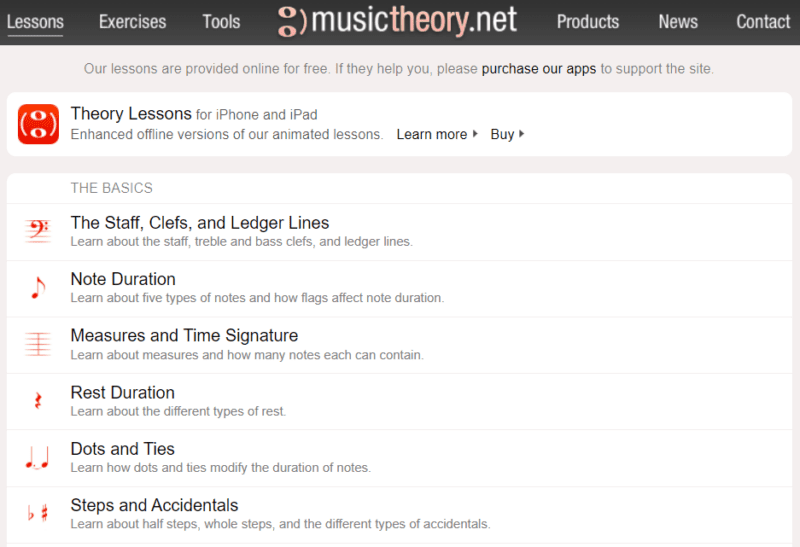
Students can access free lessons, exercises, and tools covering a wide range of topics from Note Duration to Chord Construction.
Classical Archives
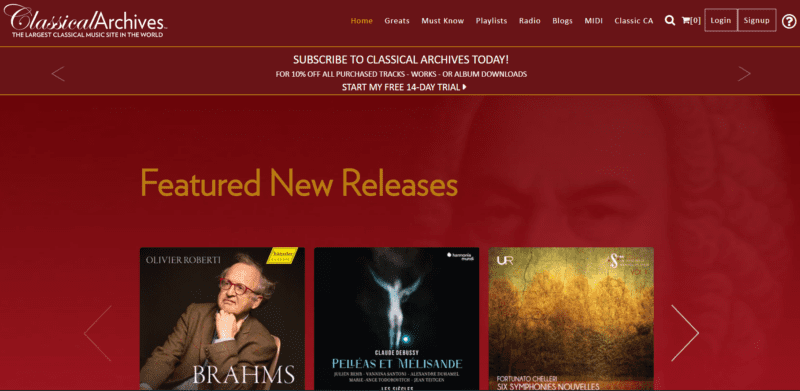
Cost: $7.99 monthly or $79.90 annually
As the largest classical music website, Classical Archives breaks down music into categories such as “Greats” and “Must Know,” making it easy to create engaging lesson plans. Students and educators can also access the pre-made playlists or create their own!
Rock & Roll Hall of Fame
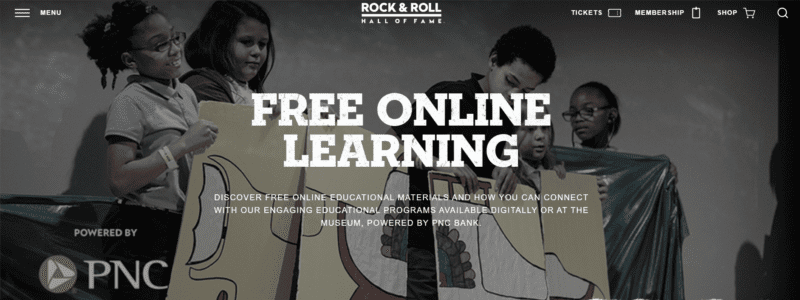
Teachers and parents, whether kids are in the classroom or learning from home, will find resources and activities that use the power of music to engage students of all ages.
What are your favorite music websites? Come share your experiences in the WeAreTeachers HELPLINE group on Facebook .
Want more suggestions be sure to subscribe to our newsletter so you can get our latest picks..
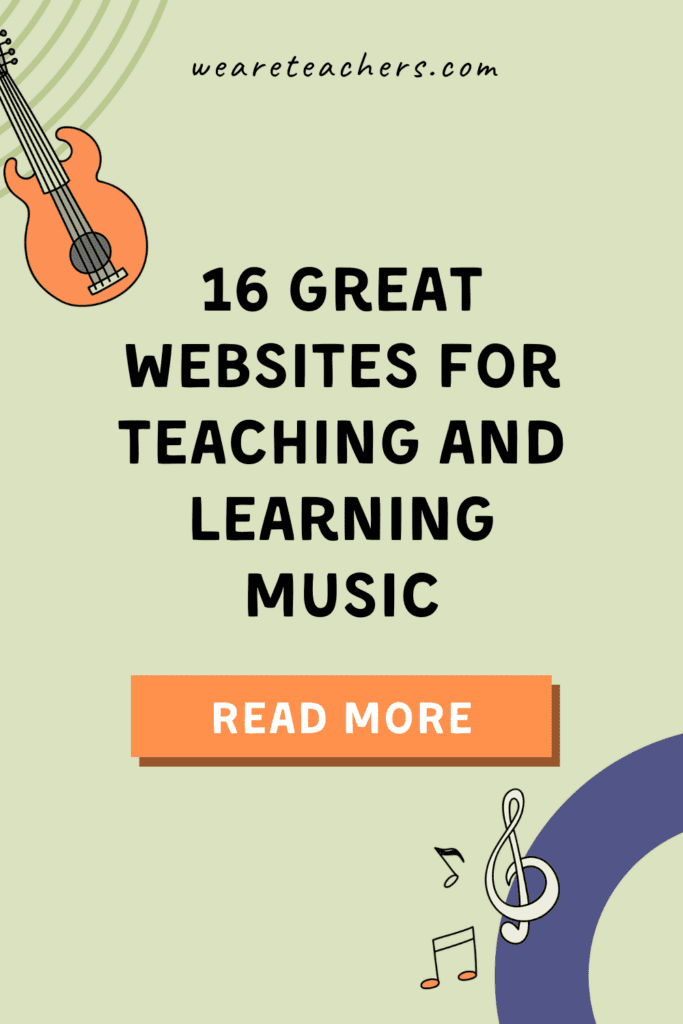
You Might Also Like
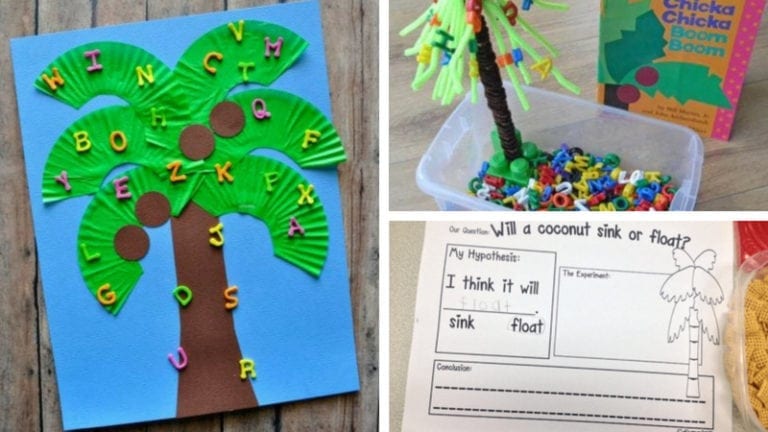

10 Chicka Chicka Boom Boom Activities That You’ll Love
A told B, and B told C ... Continue Reading
Copyright © 2023. All rights reserved. 5335 Gate Parkway, Jacksonville, FL 32256
Teaching Music Outside the Box
- Dec 14, 2022
5 Incredibly Easy Middle School Music Games for the Classroom
Updated: Jul 30, 2023

Coming up with engaging games for a middle school classroom can be daunting. They are at an age where they want to be independent, yet need some hand holding. They start the “I’m too cool for school” attitude and it can be intimidating at times when you introduce a new game or project - immediately the eye rolling takes over and you are stuck with questioning yourself. I’m here to tell you, I’VE BEEN THERE!
It is incredibly frustrating when you are put in a situation like that, but I’m here to share some games I’ve done with my kiddos and it’s actually turned out better than just “fine”, but I actually have the kids begging to play the games in class. So, check it out below to see what keeps my kids engaged.
Fun Music Classroom Games
Some of the most fun music classroom games are music theory related, It’s a great way to keep students reviewing music theory throughout the school year. Here are two of my FAVORITE music activities in the classroom that help engage students in reviewing by making it a music game in the classroom.
Music Twister

Twister is a great game that engages a lot of age groups. This game is no exception. Easy instructions and directions!
Take duct tape, electrical tape or any other tape material to place on the floor. Make it a HUGE music staff with 5 lines across. I like to put measures in the staff so that when students play, they know where their space is during the music twister game.
TIP : When putting the lines down, please keep in mind your students body size. You don’t want to make it too big or too small. I usually make mine about 4 feet tall between the bottom line and top line. Then I put the tape down for the middle line and then put the 2nd and 4th line down last. This seems to work best for me.
The rules are the same as a normal twister game. You can use a right or left, hand or foot and it is to be placed on a random (in this case) letter name on the music staff.
TIP : If one of the letter names are doubled (like there are two F’s and two E’s on the music staff), make sure to label the top one “High E” and the line E “Low E”. This will help with confusion.
You can make cards for you to pull from OR you can have go to a spinner and have it be random that way. I go to wheeldecide.com to do this. OR you can just say which limb and note name on your own - sometimes the kids beg for a challenge, so I play the challenging angles.
I like to tell kids, no other body parts can touch the floor UNLESS I call for it. They also tell them they can lift off a foot or hand unless it is called - this can make it WAY more challenging!
If you want your entire class to be bought it. Have them be in groups and compete against each other. Ex. 1st person from group #1 and #2 compete for a point.
Ultimately, this is a great game for reviewing note names on either the Bass or Treble Clef!
Music Land Giant Board Game
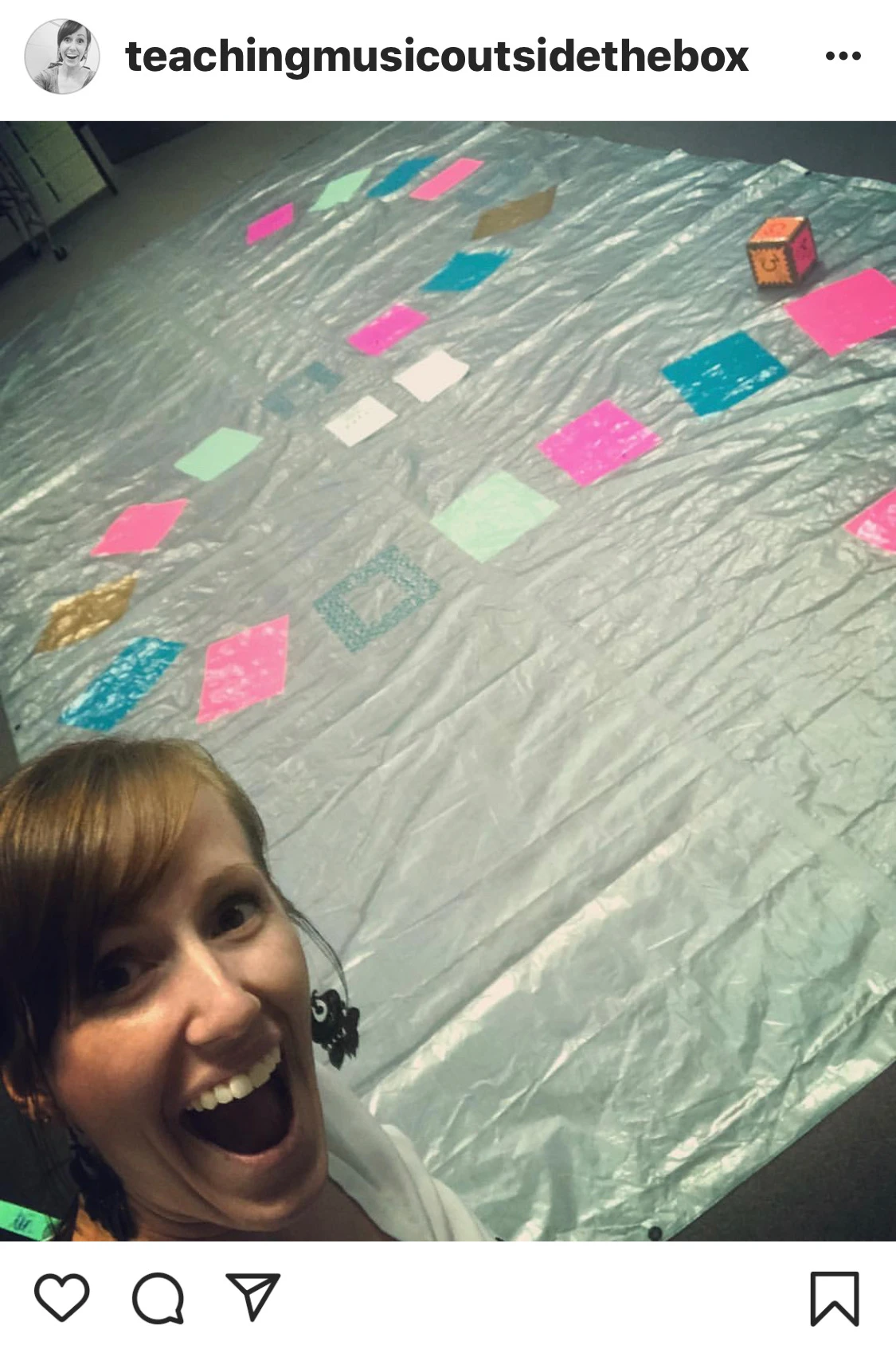
This game MIGHT take up some time on the front end to get prepped, but it is a BLAST to play!
What You Need:
Get a giant tarp and a lot of different colored duct tape (and don’t buy the cheap stuff, get good quality tape so it sticks good to the tarp).
Make a board game trail of spaces weaving around the top of the tarp.
Different colors can mean different things, so plan ahead accordingly when you lay out your colors. Gold squares can mean “Extra turn” or a square not filled in might be “miss a turn”. It adds some fun elements to the game - and what’s even better is you can determine what you want it to be!
Rules for Music Land

Move all Chairs/Desks out-of-the-way and lay down tarp (or go outside if its nice!)
Break up the class into 4 different groups.The groups will sit together around the tarp (I have them sit on the floor).
The groups will create a “group order” (who’s going first, second, third, etc.).
Once done, the first person from each group will come up to the start line.
One at a time, each group representative (#1) will roll the die and choose a card. They will attempt to answer, with the help of their group members.If they get it right, they move how many spots they rolled. If it is wrong, they stay on the Tarp until they get a question correct (which could go a couple rounds) and the same question is given to the next Team.
Once all representatives have gone (I call these “rounds”), they switch spots on the tarp so the next Representative (#2) can answer a question.
The winner can ONLY win if they roll the exact number of spaces in front of them. Ex. If they roll 2 spaces away from the finish…they have to roll a 2 in order to win (and get the question correct). This can prolong the game if need be.
This game always gets my classes excited and they beg to play this constantly! If you want the cards I use for when I play, you can find the link below. You can just print them off on normal printer paper.
Spoons Music Game
I have memories of playing Spoons in the college cafeteria with 20 other college kids. It was a blast then and it’s still a blast now. And what’s great about this is that you can tailor it to WHATEVER you want. Dynamics? Time Signatures? Note Names? You name it, you can make it! If you don’t know how to play Spoons, check out this video for a quick explanation .
How to Make the Cards
You can just cut up cardboard paper and hand write
Print off card and laminate them to actual playing cards.
Print them on index cards and laminate them (remember, we are going for “make it once and it’s last a long time).
Ideas for Your Spoons Music Game
Dynamics - they have to match the definition, abbreviation, term, and the use of it in a measure.
Note names - have them match up the letter name, location of the note (ex. 2nd line), a visual picture of the note on the measure, and a fingering chart of the note.
Note Values - Have them match up the note value (quarter note), beats (1 beat), actual name of the note (quarter note), and it being used in a measure and highlighted.
Keep it Simple - Or you can just create 4 duplicates of each symbol or term and they have to match them up in their hands of cards.
I personally like doing four different ways of matching the cards, because they have to actually think about the terminology and how it’s applied in music. But, you do whatever you feel like your class needs the most!
Music Activities Online
One of my favorite activities for the music classroom is to have them remix a song on Chrome Music Lab.
How to Implement Chrome Music Lab Remixes

There are a TON of tutorial videos on Youtube on how to make songs on Music Lab. But, I like to make it “extra” ::insert hair flip::. I tell them they have to remix it.
We talk about ways to alter a theme (which makes it a variation). Typically tempo, timbre, rhythm and pitches are discussed when creating remixes in the classroom. WHICH IS PERFECT!
So, the students HAVE to write the song out first, and then they have to do 2 alterations (ex. Change some of the pitches and the tempo) to create their remix.
Once they are done, they can share their remix with the class.
This can also double as a great sub day lesson plan if your kids can have access to devices while you are gone. It’s easy to implement and the kids LOVE this activity. I’ve done this with 5th, 6th and 7th graders and each time, they love it.
Classroom Management Game
This one isn’t exactly a music game…but it is a great way to keep kids engaged and focused. Especially if you are needing a day to get through a lot of content. This works with classes that are super chatty. It does involve consequences at the end of the game.
The IT Game
The It Game is a simple game that is implemented by the teacher. It is pretty much like Tag, but instead of tagging a player, the player becomes “it” by their own actions.
Introduce the rules of the game (I’m giving this to you below)
Always count down when you start. I normally say “It Game. 3-2-1”
If a student plays or talks out of turn, they become “it”. You will simply say “ You’re it” and continue teaching. You don’t have to redirect or correct behavior. They know what this means because you have told the class the rules.
Here is the kicker - If someone else talks or plays out of turn, the previous students is free and this student is now “it”. (just like the game Tag).
The last person who is “it” has a consequence. I don’t make the consequence severe or even “that bad”. It might be they come in for 3 minutes at lunch or they have to straighten up the chairs before the bell rings, etc. It’s not anything that is a serious consequence.
This game is really about concentration and being hyper aware. You would think the kids would be super aware of other kids throughout the whole class period, just waiting for someone to talk. But really, they keep focused on the lesson at hand and I normally have some of the best teaching by playing this game.
I don’t do it often, because I don’t need to most of the time…but there is always that weird day when it takes 20 minutes to start class because the kids are crazy or it’s a full moon on halloween. This is when you would implement this.
The kids that want to learn LOVE this game. The kids that receive more consequences than normal throughout the school day LOVE this game because they love the challenge. And the kids keep each other accountable without being annoying about it. It’s a nice change of pace if you need a quick classroom management game. Don’t believe me, just try it. 😁
I hope these games and activities help your students keep engaged during some boring topics! It's all about making music games in the classroom engaging and keeping them on their toes! If you are needing more inspiration for the music classroom, check out the rest of the blogs on Teaching Music Outside the Box. Make sure to let me know what your absolute favorite activity is and how it helped!
If you are looking for more resources for your music classroom or band classroom, please feel free to visit my other blog posts below!
How to Create Band Lesson Plans to Engage Students on Multiple Levels
3 Fantastic Music Activity for Kids in Middle School
SPONSORED BY Grizzly Bay Batons

- Beginning Band Blog Posts
- Music Teacher Resources Blog Posts
Recent Posts
Transforming Motivation in a Classroom with These Helpful Techniques
3 Tips for Making The History of Music Timeline an Adventure Instead of a Snore-fest
- Professional
- International
Log In to My PreK-12 Platform
- AP/Honors & Electives
- my.mheducation.com
- Open Learning Platform
Log In to My Higher Ed Platform
- Connect Math Hosted by ALEKS
- My Bookshelf (eBook Access)
- Language Arts
- Science & Health
Social Studies
- Intervention
- Supplemental
- Arts & World Languages
- AP®, Honors & Electives, and CTE
View All Language Arts Programs

Wonders (PreK–6)

StudySync (6–12)

Achieve3000 Literacy (2–12)

Reading Mastery Transformations (K–5)
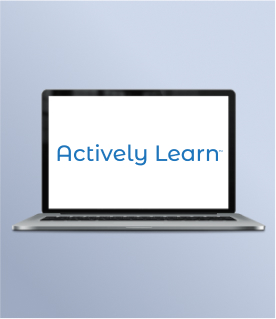
Actively Learn (3–12)

Direct Instruction (PreK–12)

Open Court Reading (K–5)

Smarty Ants (PreK–2)

Redbird Language Arts & Writing (2–7)

View all Math Programs

Reveal Math (K–12)

ALEKS (3–12)
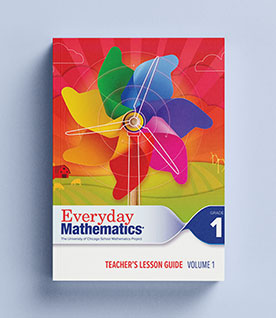
Everyday Math (PreK–6)

Redbird Math (K–7)

Illustrative Math (6–12)

Number Worlds (PreK–8)
View all Science & Health Programs

Inspire Science (K–12)

Glencoe Health (9–12)

Teen Health (6–8)

McGraw Hill Science Interactives (6–12)
View all Social Studies Programs

IMPACT (K–5)

New Social Studies (6–12)

Networks (6–12)
View all Intervention Programs

Arrive Math (K–8)

Corrective Reading (3–12)

Corrective Math (3–12)

Connecting Math Concepts (K–6)
View all Supplemental Programs

McGraw Hill AR

Achieve3000 Math (3–12)

Moments for MySELF

ACT & SAT Practice Books
View all Visual & Performing Arts Programs

Spotlight on Music (PreK–8)

Music Studio Marketplace (PreK–12)

Music Its Role (9–12)

Exploring Art (6–8)

Voices in Concert (6–12)

Art Talk (9–12)
View all World Languages Programs

¡Así se dice!
View all AP®, Honors & Electives, and CTE Programs

Communications

English Language Arts
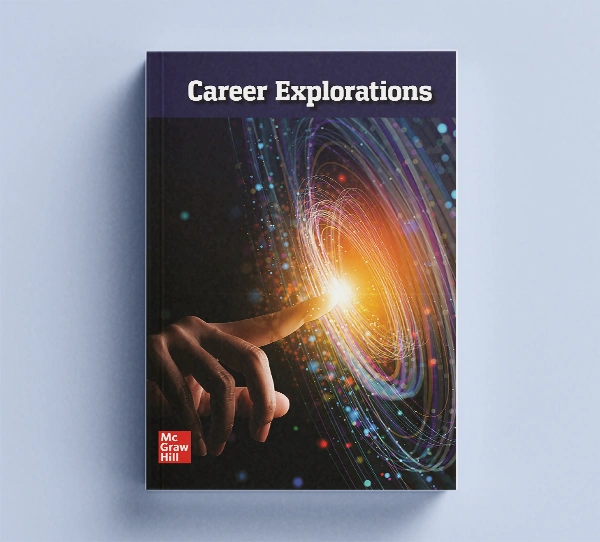
Career & Technical Ed (CTE)
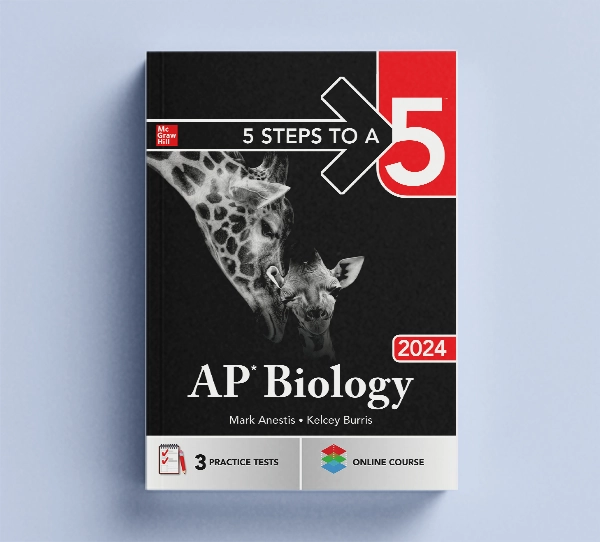
5 Steps to a 5 Test Prep
Traditional Ordering
Contact a Rep
Request a Quote
Create® EasyOrder
Shop Online
Online Ordering Guide
Quick Order
For Your Classroom & School
Back to School Prep
Product Trainings
Integration Services
Free Educational Activities
K–12 Mobile App
Science of Literacy
Our Principles
What We Stand For
Art of Teaching
Equity in Action
Educator Communities
Inspired Ideas (blog)

Spotlight on Music : A PreK–8 Interactive Digital-First Music Curriculum
Hit All the Right Notes For Every Student
Deliver quality instruction with a spiraling curriculum, a comprehensive song library of authentic literature (also available in print), virtual instruments, interactive listening maps and videos, Orff orchestrations for grades 1–6, more than 1,300 interactive songs from a variety of cultures and artists, and much more.
Every student has a voice—help them find it with Spotlight on Music .
Courses for Spotlight on Music
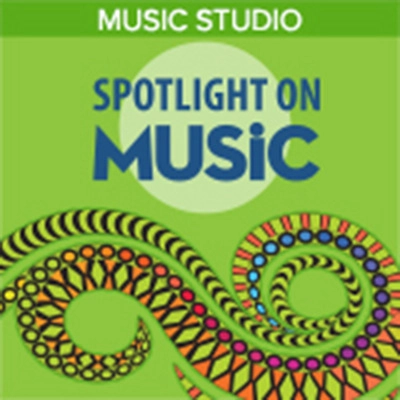
Grade PreK , Link will open in a new tab
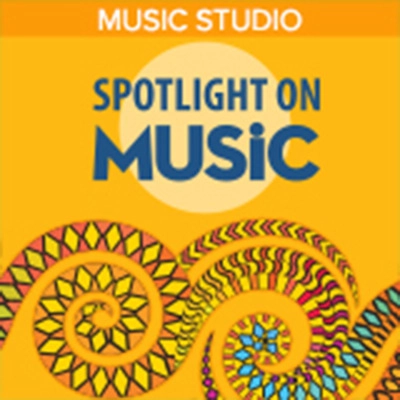
Grade K , Link will open in a new tab
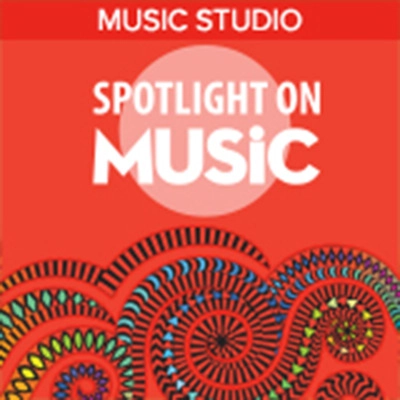
Grade 1 , Link will open in a new tab
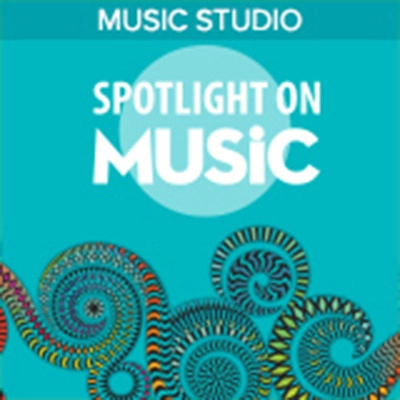
Grade 2 , Link will open in a new tab
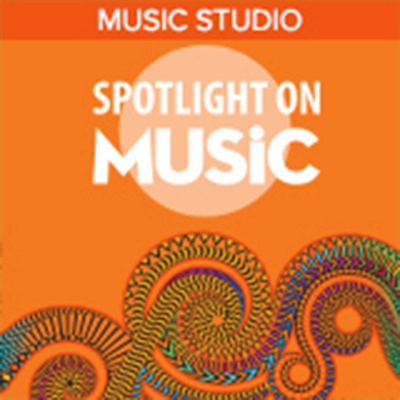
Grade 3 , Link will open in a new tab
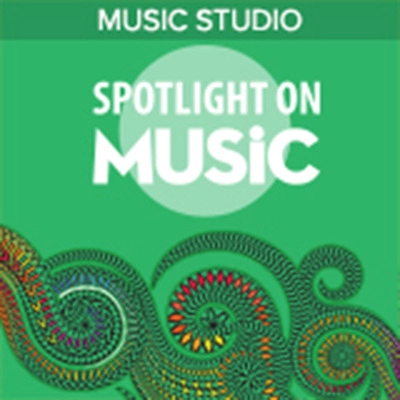
Grade 4 , Link will open in a new tab
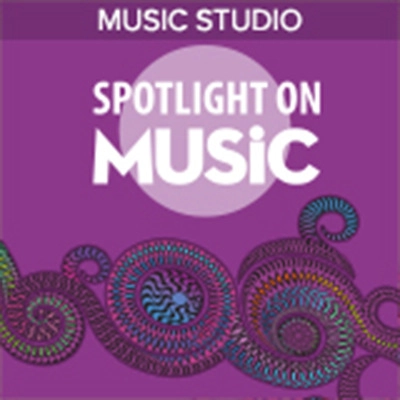
Grade 5 , Link will open in a new tab
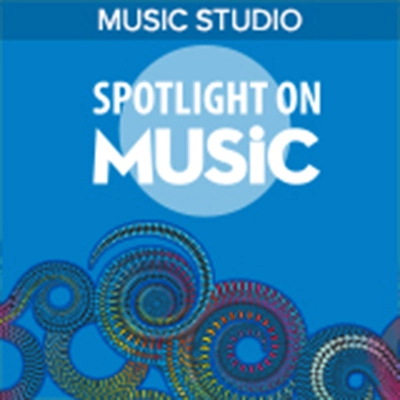
Grade 6 , Link will open in a new tab
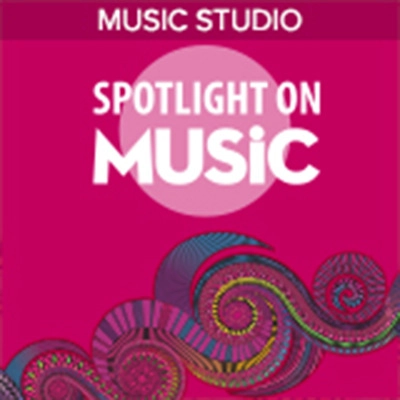
Grade 7 , Link will open in a new tab
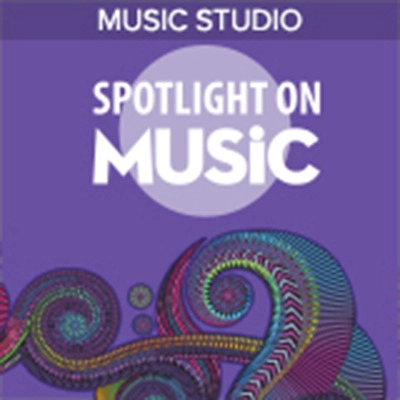
Grade 8 , Link will open in a new tab

Middle School Music Lesson Plan
Here are some tips for your next middle school music lesson plan which should help you to make your next music theory lesson FUN.
As usual, let me know your sucess stories and feel free to provide extra materials, ideas and comments of your own using the comments section below.
Tip #1 – “Musical Sums” and Worksheet Ideas
Middle School kids just love musical games, stories and puzzles- here’s a few “Musical Sum’s” and other activities you could use in your worksheets
Tip #2- “Scale Ladders” Game
Have you ever tried to teach Scale Degrees to a Middle School Class and found that they just don’t get it?Here’s a simple game you can play, designed for small groups that will help them to learn with minimal effort.
Preparation:
Make a Game Board template on A4 paper. You need 8 steps ascending on the page to look like a staircase or ladder.The “steps” should be able to fit a small scale degree flashcards inside.
Make some small counters with various scale degree labelled on them to use on the gameboard
Object: To fill in each step of the ladder using scale degrees
Setup: Face all counters down on a table or in a box. Each player receives a gameboard.
Directions: Each player has a turn picking up a game counter and putting it onto their game card. First one to complete the ladder with scale degrees in the correct positions wins!
Tip #3 – “Pitch Bingo”
Bingo is just one of those classics that can be used over and over again, students never get bored of it and it can take as long or as little time as you like.
Here’s a musical variation of the game especially designed for the whole class.It is best suited to teachers who have experience in musical reading. I used out print out loads of templates as pads and have them ready for those spare few minutes anytime I needed them.
Make up some bingo templates including the pitch and a check box
Make up some bingo tokens to be read out by the “caller” Explaining the pitch and the note.
Instructions:
Give out a bingo strip per student, or you could choose to make up pads of them for regular use in advance.
Have a caller draw out the tokens from the bag or box, or use another method of randomly selecting pitches.
The first student(s) to check off all the pitches is the winner and calls out “BINGO!”
Templates for these plus many other games are available in our Music Games product from the Fun Music Company, Printable Music Games. Click here to check it out »
Share This Story, Choose Your Platform!
About the author: funmusicco.
One Comment
I was very impressed with the Middle School Music Lessons provided. I teach a Middle School Piano class and I have a Piano Club of students that take piano lessons after school. However, I am an Elementary Music School teacher and I am noticing that I don’t have the techniques to keep my Middle School Students focused the whole time during my piano classes. I thank you for the new ideas that I could incorporate during my hour lessons everyday. Ms. Guzman
Leave A Comment Cancel reply
Save my name, email, and website in this browser for the next time I comment.
A Fun Music Company Website Copyright © 2023
Curriculum quote request.
Please use the form below to request your custom pricing, which will be available instantly and sent to you via email.
Request a PDF Quotation
If you require a formal quotation to present to school administration or for other purposes, please enter your email again.
middle school music activities
All Formats
Resource types, all resource types.
- Rating Count
- Price (Ascending)
- Price (Descending)
- Most Recent
Middle school music activities

Music in Film Lesson Plans Activities & Worksheets - Middle School General Music

- Easel Activity

Middle School Music Composer Research Activities Worksheets
- Google Apps™
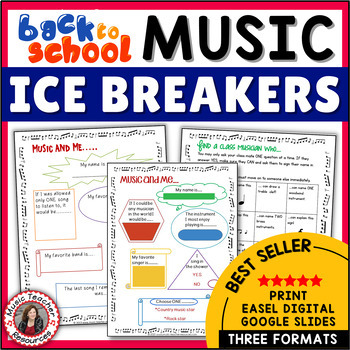
Back to School Music Activities - Ice Breakers for Middle School Music
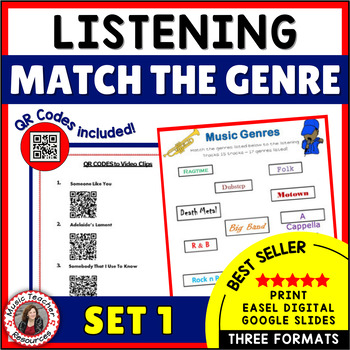
Middle School Music Listening Appreciation Activities Worksheets - Music Genres
- Internet Activities

Rhythm Activities : Beatboxing Music Unit For Middle School with Worksheets
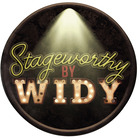
Fun ELA Middle School Music & Video Activities & Lessons | Printable & Digital

Music Composition Activities & Worksheets - Middle School Music
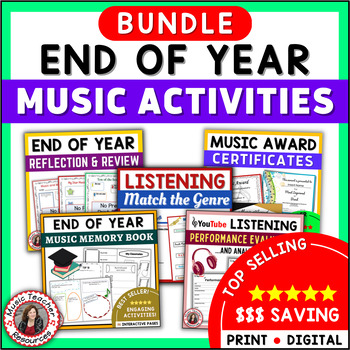
End of Year MUSIC Activities - Middle School & General Music Lessons & Sub Plans
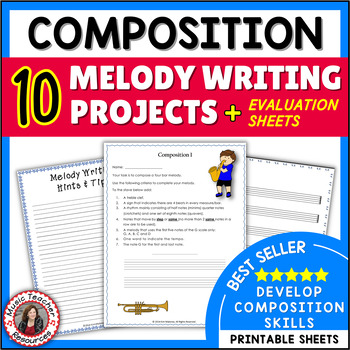
Composition Activities and Worksheets for Middle School Music and Sub Plans
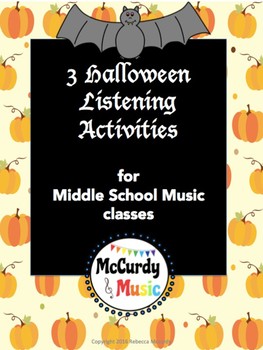
Halloween Listening Activities for Middle School General Music , Band, or Chorus
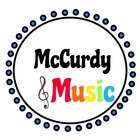
Music Composers - Middle School and General Music Activities - Sub Plans
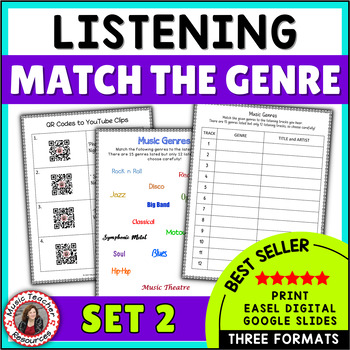
Music Genres Music Appreciation Activities - Middle School General Music
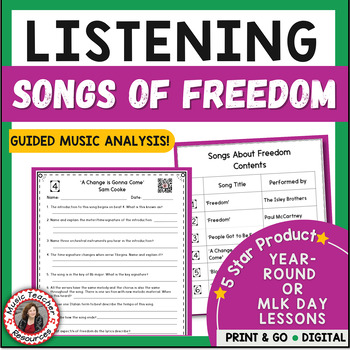
Middle School Music Appreciation Activities & Worksheets - Listening Lessons

RHYTHM DRAG AND DROP ACTIVITIES for Middle School General Music
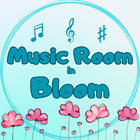
- Google Drive™ folder
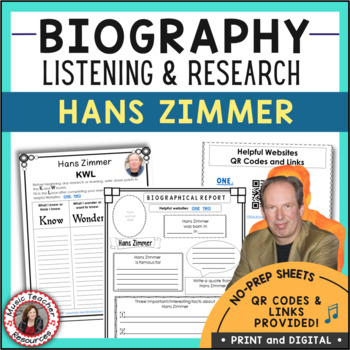
HANS ZIMMER Research and Listening Activities for Middle School General Music
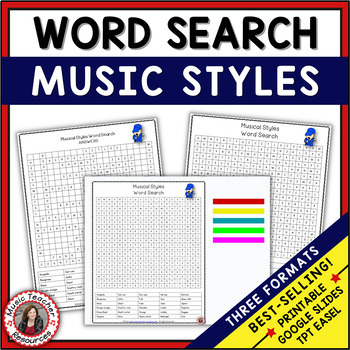
Music Genres Word Search Activity - Middle School and General Music
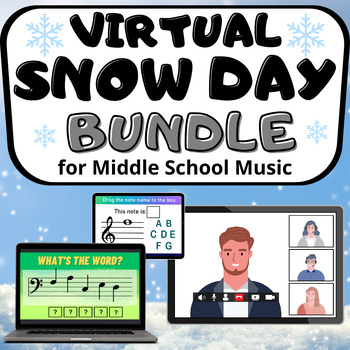
Virtual Snow Day Activities for Middle School General Music Flexible Instruction

Christmas Music Middle School Project - Mixed Tape Gift Activity
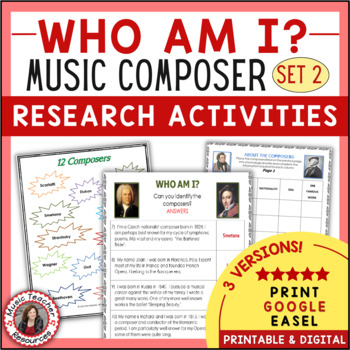
MOZART Research and Listening Activities for Middle School General Music
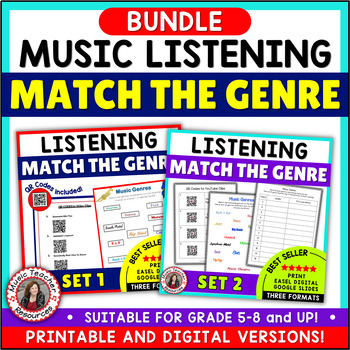
Music Appreciation - Music Genre Activities - Middle School and General Music
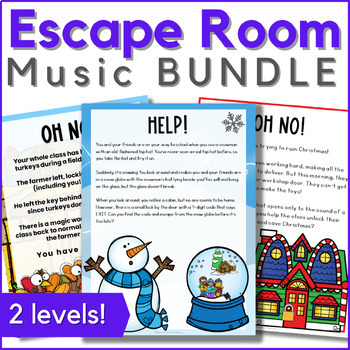
Music Escape Room Bundle - Activities for Upper Elementary, Middle School Music

Middle School Music Bundle → No Prep Activities & Worksheets - Digital Resources
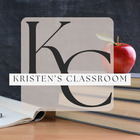
The Eclipse Chaser
As millions of americans prepare to see a total solar eclipse, a retired astrophysicist known as “mr. eclipse,” discusses the celestial phenomenon..
This transcript was created using speech recognition software. While it has been reviewed by human transcribers, it may contain errors. Please review the episode audio before quoting from this transcript and email [email protected] with any questions.
Can you hear — Fred, can you hear me?
[DISTORTED SPEECH]:
The internet is a little wonky.
OK. Well, [DISTORTED SPEECH]: Arizona. So the internet speed here isn’t really fast.
I think we’re going to call — yeah, I think we’re going to call you back on a — for the first time in a really long time — a landline.
[PHONE RINGING]
Hey, Fred, it’s Michael Barbaro.
You can hear me OK?
I can hear you.
Perfect. So, Fred, where exactly am I reaching you?
I’m in Portal, Arizona, in a little community called Arizona Sky Village. And it’s a very rural community. So our internet and phone lines are not very good. And the nearest grocery store is 60 miles away.
Wow. And why would you choose to live in such a remote place with such bad internet?
Because the sky is dark. It’s like the sky was a hundred years ago before cities encroached on all of the country. I guess you’d call it an astronomy development. Mainly, amateur astronomers who have built homes here far from city lights for the express purpose of studying the sky.
[MUSIC PLAYING]
So it’s literally a community where once the sun goes down, it’s pitch black. And some, perhaps all of you, are stargazing?
Yes, exactly.
Well, I think I’m beginning to understand why you might have the nickname that you do. Can you just tell our listeners what that nickname is?
My nickname is Mr. Eclipse.
From “The New York Times,” I’m Michael Barbaro. This is “The Daily.” Today’s total solar eclipse will be watched by millions of people across North America, none of them as closely as Fred Espenak, a longtime NASA scientist who’s devoted his entire life to studying, chasing, and popularizing the wonder that is an eclipse.
It’s Monday, April 8.
Fred, help me understand how you become Mr. Eclipse, how you go from being Fred to this seemingly very hard-earned nickname of Mr. Eclipse.
Well, I was visiting my grandparents at their summer home. And it was a partial eclipse of the sun back in the early 1960s. And I was a 10 - or 12-year-old kid. I got my parents to get me a small telescope. And I watched some of the partial phases. And it was really interesting.
And I started reading about eclipses. And I found out that as interesting as a partial eclipse is, a total eclipse is far more interesting. The moon is only 1/400 the diameter of the sun. It’s tiny compared to the sun. But it’s 400 times closer to the Earth. So it’s just this incredible coincidence that the moon and sun appear to be the same size in the sky. And once in a while, the moon passes directly between the Earth and the sun. And you’re plunged into this very strange midday twilight.
But they’re limited to a very small geographic areas to see a total eclipse. And this little book I was studying had a map of the world, showing upcoming paths of total solar eclipses. And I realized that one was passing through North America about 600 miles from where I lived. And that eclipse was in 1970.
And I was reading about this in 1963, 1964. And I made a promise to myself that I was going to get to that eclipse in 1970 to see it because I thought it was a one chance in a lifetime to see a total eclipse of the sun.
So just to be very clear, you see a partial eclipse, and you immediately think to yourself, that was fine. But I need the real thing. I need a full eclipse. And you happen to find out, around this time, that a real eclipse is coming but in seven years.
Right. I mean, there were other eclipses between that time and seven years in the future. But they were in other parts of the world. And I couldn’t buy an airplane ticket and fly to Europe or Australia.
And by 1970, I’d been waiting for this. And by this point, I had just gotten a driver’s license. And I convinced my parents to let me drive the car 600 miles to get down into the path of totality to see this great event.
Wow. Wait, from where to where?
From Staten Island, New York, down to a little town in North Carolina.
How did you convince your parents to let you do that? I mean, that’s —
Well, I had seven years to work on it.
[LAUGHS]: Right.
And I was just a nerdy kid. I didn’t get into trouble. I was interested in science. I was out in the woods, studying frogs and wildlife and stuff. So this was just a natural progression of the type of things I would normally do.
Right. OK. So I wonder if you can describe this journey you end up taking from Staten Island. How does the trip unfold as you’re headed on this 600 mile?
So, I think, on March 6, 1970, it was a Friday. My friend and I left to drive to the eclipse path. We probably got on the road probably at 5:00 AM because it was going to be a very long day.
And we’ve got a detailed map in the car, which I’ve plotted the eclipse path on. And we’re just trying to get far enough south to get into the path of the eclipse, which for us is easternmost Virginia or Eastern North Carolina. And I drive and drive and drive all day long. Very long day.
We get down to North Carolina right about maybe 6:00 PM. And we just see this little town in North Carolina that we’re driving through. And it happens to have a convenient motel right in the center of the path. And that was good enough. Got a room available. And we check in. And that’s where we’re going to watch the eclipse from.
And the next morning was eclipse day. It was a bright, crisp, sunny morning. There weren’t any clouds at all in the sky. And I was amazed that outside the back of the motel, in this grassy field, there were dozens and dozens of people with telescopes out there, specifically there for the eclipse that morning.
We were really excited about this. We set up our — my telescope. And we had another camera set up to watch it. And we walked around and marveled at some of the other people and their telescopes and discussed the eclipse with them. And the eclipse started probably around noon or 1:00 in the afternoon.
Describe the actual event itself, the eclipse. How did it begin?
Well, all solar eclipses begin as a partial eclipse. And the sun is gradually covered by the moon as the moon takes larger and larger pieces out of the sun, as it slowly crawls across the sun’s surface. And you don’t really notice much going on with a naked eye.
It’s really only in the last 10 minutes or so that you start to notice changes in the environment because now enough of the sun has been covered, upwards of maybe 90 percent of the sun. And you start to notice the temperature falling. There’s a chill in the air.
Also, since so much of the sun is covered, the daylight starts to take on an anemic quality. It’s weak. The sun is still too bright to look at. But the surroundings, the environment is not as bright as it was a half hour earlier.
You start to notice animals reacting to the dwindling sunlight. They start acting like it’s sunset. And they start performing some of their evening rituals, like birds roosting, perhaps calling their evening songs. And plants start closing up and the dropping sunlight. And then the dropping temperatures.
And there’s an acceleration now of all these effects. The temperature drop, the drop in the sunlight, it starts happening faster and faster and getting darker and darker. And maybe about a minute before the total eclipse began, we noticed strange patterns on the ground beneath us, on the grassy field that we were on — these ripples racing across the field. And these are something called shadow bands.
They look a lot like the rippling patterns that you would see on the bottom of a swimming pool, bands of light and dark, and moving very quickly across the ground. The sky is — it’s a dark blue. And it’s getting darker rapidly in this dwindling sunlight. And you go from daylight to twilight in just 10 or 20 seconds. It’s almost like someone has the hand on the rheostat and turns the house lights down in the theater.
You just see the light just go right down.
And the sky gets dark enough that the corona, the outer atmosphere of the sun, starts emerging from the background sky. This ring or halo of gas that surrounds the sun, and it’s visible around the moon, which is in silhouette against the sun. And along one edge of the moon is this bright bead of sunlight because that’s the last remaining piece of the sun before it becomes total.
And this is the diamond ring effect because you’ve got the ring of the corona and this dazzling jewel along one edge of it. You only get to see this for 10 or 15 seconds — it’s very fleeting — before the moon completely covers the sun’s disk. And totality begins. Suddenly, you’re in this twilight of the moon’s shadow.
And you look around the horizon. And you’re seeing the colors of sunrise or sunset 360 degrees around the horizon because you’re looking out the edge of the moon’s shadow. And looking back up into the sky, the sun is gone now. And you see this black disk of the moon in silhouette surrounded by the sun’s corona.
Maybe this says more about my nature than anything else, but what you’re describing, a little bit, feels like the end of the world.
Well, I think, when you see this all transpire, you can easily understand how people thought this was the end of the world because it seems far outside of the realms of nature. It seems supernatural. So you can see how people panicked that didn’t understand what was going on.
That was not your reaction?
No. I think it’s a sense of belonging — belonging to this incredible universe, both belonging and a humbleness that how minuscule we are. And yet we’re a part of this fantastic cosmic wheel of motion in the solar system. You almost get a three-dimensional sense of the motions of the Earth and the moon around the sun when you see this clockwork displayed right in front of you, this mechanics of the eclipse taking place.
It almost lifts you up off the planet, and you can look back down at the solar system and see how it’s all put together. And you’ve only got to, in that case — in that particular eclipse, it was only 2 and 1/2 minutes to look at this.
Wow. It’s kind of a clock in your head, saying, you don’t have much of this.
You don’t have much of it. And it almost seems like time stops.
And at the same time, all of a sudden, the eclipse is over. Those 2 minutes just raced by. And it’s over. All of a sudden, the diamond ring forms again on the opposite side of the moon, as the sun starts to become uncovered at the end of totality. And the diamond ring appears. It grows incredibly bright in just a few seconds. And you can’t look at it anymore. It’s too bright. You’ve got to put your filters back on and cover your telescope with a solar filter so it doesn’t get damaged. And you’re trembling because of this event.
Everybody was cheering and shouting and yelling. I mean, you would have thought you were at a sports game, and the home team just scored a touchdown. Just everybody screaming at the top of their lungs. And I immediately started thinking that this can’t be a once in a lifetime experience. I’ve got to see this again.
We’ll be right back.
OK. So, Fred, it’s the early 1970s. And you are not Mr. Eclipse yet. You’re just a kid who felt something very big when you watched an eclipse. So how did you end up becoming the premier authority that you now are on eclipses?
Well, after that 1970 eclipse, I started looking into upcoming solar eclipses so I could get a chance to see the sun’s corona again. And the next total eclipse was in Eastern Canada in July of 1972. And I started thinking about that eclipse. And by then, I was going to be in college.
And I started planning because that one was still something I could drive to. It was 1,200 miles instead of 600 miles.
So the summer of 1972 rolls around. And I drove up to the eclipse in Quebec to see totality and was unfortunately clouded out of the eclipse. I saw some of the partial phases. But clouds moved in and obscured the sun for that view of the sun’s corona.
You were robbed.
I was robbed. And I realized, well, I’ve got to expand my outlook on what’s an acceptable distance to travel to see a total eclipse because the next total eclipse then, in 1973, was through the Sahara Desert in Northern Africa. So I traveled to the Sahara desert for the eclipse, where we had decent weather, not perfect but decent weather. And we got to see totality there.
You saw totality in the desert?
In the desert. In the Sahara Desert. After that, it was just trying to get to every total eclipse I possibly could get to.
At this point, you’re clearly starting to become an eclipse chaser. And I don’t even know if such a thing existed at that moment.
Yeah. I don’t know if it was called that then, but certainly, yeah.
And if you’ll permit me a question that might seem maybe dopey to someone in your field, after you’ve seen one or two or three of these, do they start to blend in together and become a little bit the same?
Not at all. Each one is distinctly different. The sun itself is dramatically different. The sun’s corona is different at each eclipse because the corona is a product of the sun’s magnetic field. And that magnetic field is changing every day. So the details, the fine structure in the sun’s corona is always different. So every eclipse is dramatically different. The appearance of the sun’s corona.
Right. If you look at one Renoir, it’s not the same as the next one. You’re describing the corona of each eclipse as its own work of art, basically.
Exactly. Yeah.
So as you’re chasing these eclipses around the world, what is the place of an eclipse in your day-to-day academic studies and, soon enough, your professional work?
So I went to grad school at University of Toledo and did some work at Kitt Peak National Observatory, learning the ins and outs of photometric photometry — that is, measuring the brightness of stars. And eventually, this led to a job opening at the NASA Goddard Space Flight Center.
And I got interested in the idea of predicting eclipses and started studying the mathematics of how to do this. And I took it over unofficially and started publishing these technical maps and details. And we published about a dozen books through NASA on upcoming eclipses. People would just write me a letter and say they wanted a copy of the eclipse bulletin for such and such an eclipse. And I would stuff it in an envelope and mail it to them.
So you take it upon yourself to make sure that everyone is going to know when the next eclipse is coming?
And no doubt, during this period, you keep going to each and every eclipse. And I wonder which of them stand out to you.
Well, I’ve seen total eclipses from Australia, from Africa, from the Altiplanos in Bolivia, from the ice sheet on the coast of Antarctica, and even from Northern China, on the edge of the Gobi Desert. But one of the most notable eclipses for me was I traveled to India to see a 41-second eclipse, which was very short. And besides seeing a great eclipse in India, I also met my future wife there. She was on the same trip.
I have to hear that story.
Well, she had been trying to see a total eclipse for about 25 years.
She tried to see the 1970 eclipse. But her friends who were going to drive down from Pennsylvania down to North Carolina talked her out of it at the 11th hour.
They talked her out of seeing the same eclipse that was your first total eclipse that was so important to you?
Yes. And they talked her out of it because from Pennsylvania, they were going to have maybe a 90 percent eclipse. They didn’t know any better. They thought that was good enough. And she regretted that decision.
So then she said, OK, well, I’ve got to get to the next total eclipse, which was in Quebec in 1972, the same one that was my second eclipse. And we were probably within five miles of each other in Quebec. And we were both clouded out. Then she was married. She was raising kids. She got busy with domestic life for 20 years. She became a widow.
So now, 1995, there’s this 41-second eclipse in India that is very difficult to get to. It’s halfway around the world. But she’s still itching to see a total eclipse. And we joined the same expedition, a travel group, of 30 eclipse chasers and end up in India for the eclipse. And we have fantastic weather. It’s perfect.
She was in tears after totality. She had been waiting so long to see it. And we struck up a friendship on that trip. By the time the 1998 eclipse was taking place in the Caribbean, at that point, we were together. That was our first eclipse to observe as a couple. I think our wedding cake had a big eclipse on the top of the cake.
[LAUGHS]: Perfect.
We made a music CD for the wedding that we played during the reception. And of course, all the music on the CD had sun and moon themes to it.
Nothing I can say, a total eclipse of the heart
Of course, we had “Total Eclipse of the Heart.” It was a must-have.
Had to. Had to.
It strikes me, Fred, that eclipses are such an organizing principle in your life. Your life seems to literally orbit around them. When you were a kid, you started planning for them years in advance. This work becomes central to your career. It’s how you meet your wife.
And you said, when I asked you, about each eclipse that they’re all different. And obviously, you’re different at each eclipse because time has passed. Your life has changed. And it just feels like your life is being lived in a kind of ongoing conversation with this phenomenon of the sun and the moon overlapping.
Well, the eclipses are like benchmarks that I can use to figure out what else was going on in my life during these times, because I remember the dates of every single eclipse I’ve been to. And if I see a photograph of the solar corona shot during any particular eclipse, I know what eclipse that was. I can recognize the pattern of the corona like a fingerprint.
That’s amazing.
And I the year of the eclipse. It reminds me of when Pat and I got married and between which eclipse we were getting married and had to plan our wedding so it didn’t interfere with any kind of eclipse trips.
And they just serve as benchmarks or markers for the rest of my life of when various eclipses take place. So they’re easy for marking the passage of time.
So we are, of course, talking to you a few days before this year’s eclipse, which I cannot fathom you missing. So where are you planning to watch this total eclipse?
Pat and I are leaving for Mazatlán, Mexico, actually tomorrow. And we’ve got about 80 people joining us down in Mazatlán for this eclipse in our tour group.
And for you, of course, this year’s eclipse is just the latest in a very long line of eclipses. But I think, for the rest of us — and here, I’m thinking about myself — this is really going to be my first total eclipse, at least that I can remember. And for my two little kids, it’s absolutely going to be their first.
And given the hard-earned wisdom that you’ve accumulated in all your decades of chasing eclipses around the world, I wonder if you can give us just a little bit of advice for how to best live inside this very brief window of a total solar eclipse, to make sure, not to be cliche, but that we make it count.
Well, I think one mistake that people tend to make is getting preoccupied with recording everything in their lives, what they had for lunch, what they had for dinner. And seeing the eclipse is something that you want to witness firsthand. Try to be present in seeing the eclipse in the moment of it. So don’t get preoccupied with recording every instant of it.
Sit back and try to take in the entire experience because those several minutes pass by so rapidly. But you’ll replay them in your mind over and over and over again. And you don’t want technology getting between you and that experience. And remember to take your eclipse glasses off when totality begins. Note how dark it gets during totality.
Take the glasses off because?
Well, the glasses protect your eyes from the sun’s bright disk. But when totality begins, the sun’s bright disk is gone. So if you use your solar eclipse glasses to try to look at the corona, you won’t see anything. You’ll just see blackness. You’ve got to remove the eclipse glasses in order to see the corona. And it’s completely safe.
And it’s an incredible sight to behold. But during totality, you just want to look around without the glasses on. And take in the sights. Take in the horizon, 360 degrees, surrounding you with these twilight colors and sunset colors.
You’ll easily be able to see Jupiter and Venus shining on either side of the sun during totality. And look at the details in the sun’s corona, fine, wispy textures, and any possible red prominences hugging against the moon’s disk during totality.
And let’s say it’s now the moment of totality, and you, Mr. Eclipse, can whisper one thing into someone’s ear as they’re watching. What would you say to them?
Enjoy. Just take it all in.
Well, Fred, thank you very much. We really appreciate it.
No, thank you. I hope everybody has some clear sky.
After today, the next total solar eclipse to be visible from the continental United States will occur 20 years from now, in 2044. In other words, you might as well watch today’s.
Here’s what else you need to know today. Israel has fired two officers in connection with the deadly airstrike on aid workers from the World Central Kitchen who were killed last week while delivering food to civilians in Gaza. In a report released on Friday, Israel blamed their deaths on a string of errors made by the military. The airstrike, Israel said, was based on insufficient and incorrect evidence that a passenger traveling with the workers was armed.
Meanwhile, Israel said it withdrew a division of ground troops from Southern Gaza on Sunday, leaving no soldiers actively patrolling the area. The move raises questions about Israel’s strategy as the war drags into its sixth month. In particular, it casts doubt on Israel’s plans to invade Rafah, Gaza’s southernmost city, an invasion that the United States has asked Israel not to carry out for fear of large-scale civilian casualties.
Today’s episode was produced by Alex Stern and Sydney Harper, with help from Will Reid and Jessica Cheung. It was edited by Devon Taylor; fact-checked by Susan Lee; contains original music by Dan Powell, Marion Lozano, Elisheba Ittoop, and Corey Schreppel; and sound design by Elisheba Ittoop and Dan Powell. It was engineered by Chris Wood. Our theme music is by Jim Brunberg and Ben Landsverk of Wonderly. Special thanks to Anthony Wallace.
[THEME MUSIC]
That’s it for “The Daily.” I’m Michael Barbaro. See you tomorrow.

- April 9, 2024 • 30:48 How Tesla Planted the Seeds for Its Own Potential Downfall
- April 8, 2024 • 30:28 The Eclipse Chaser
- April 7, 2024 The Sunday Read: ‘What Deathbed Visions Teach Us About Living’
- April 5, 2024 • 29:11 An Engineering Experiment to Cool the Earth
- April 4, 2024 • 32:37 Israel’s Deadly Airstrike on the World Central Kitchen
- April 3, 2024 • 27:42 The Accidental Tax Cutter in Chief
- April 2, 2024 • 29:32 Kids Are Missing School at an Alarming Rate
- April 1, 2024 • 36:14 Ronna McDaniel, TV News and the Trump Problem
- March 29, 2024 • 48:42 Hamas Took Her, and Still Has Her Husband
- March 28, 2024 • 33:40 The Newest Tech Start-Up Billionaire? Donald Trump.
- March 27, 2024 • 28:06 Democrats’ Plan to Save the Republican House Speaker
- March 26, 2024 • 29:13 The United States vs. the iPhone
Hosted by Michael Barbaro
Produced by Sydney Harper and Alex Stern
With Will Reid and Jessica Cheung
Edited by Devon Taylor
Original music by Dan Powell , Marion Lozano , Elisheba Ittoop and Corey Schreppel
Sound Design by Elisheba Ittoop and Dan Powell
Engineered by Chris Wood
Listen and follow The Daily Apple Podcasts | Spotify | Amazon Music
Today, millions of Americans will have the opportunity to see a rare total solar eclipse.
Fred Espenak, a retired astrophysicist known as Mr. Eclipse, was so blown away by an eclipse he saw as a teenager that he dedicated his life to traveling the world and seeing as many as he could.
Mr. Espenak discusses the eclipses that have punctuated and defined the most important moments in his life, and explains why these celestial phenomena are such a wonder to experience.
On today’s episode
Fred Espenak, a.k.a. “Mr. Eclipse,” a former NASA astrophysicist and lifelong eclipse chaser.

Background reading
A total solar eclipse is coming. Here’s what you need to know.
Millions of people making plans to be in the path of the solar eclipse on Monday are expecting an awe-inspiring. What is that feeling?
The eclipse that ended a war and shook the gods forever.
There are a lot of ways to listen to The Daily. Here’s how.
We aim to make transcripts available the next workday after an episode’s publication. You can find them at the top of the page.
Fact-checking by Susan Lee .
Special thanks to Anthony Wallace.
The Daily is made by Rachel Quester, Lynsea Garrison, Clare Toeniskoetter, Paige Cowett, Michael Simon Johnson, Brad Fisher, Chris Wood, Jessica Cheung, Stella Tan, Alexandra Leigh Young, Lisa Chow, Eric Krupke, Marc Georges, Luke Vander Ploeg, M.J. Davis Lin, Dan Powell, Sydney Harper, Mike Benoist, Liz O. Baylen, Asthaa Chaturvedi, Rachelle Bonja, Diana Nguyen, Marion Lozano, Corey Schreppel, Rob Szypko, Elisheba Ittoop, Mooj Zadie, Patricia Willens, Rowan Niemisto, Jody Becker, Rikki Novetsky, John Ketchum, Nina Feldman, Will Reid, Carlos Prieto, Ben Calhoun, Susan Lee, Lexie Diao, Mary Wilson, Alex Stern, Dan Farrell, Sophia Lanman, Shannon Lin, Diane Wong, Devon Taylor, Alyssa Moxley, Summer Thomad, Olivia Natt, Daniel Ramirez and Brendan Klinkenberg.
Our theme music is by Jim Brunberg and Ben Landsverk of Wonderly. Special thanks to Sam Dolnick, Paula Szuchman, Lisa Tobin, Larissa Anderson, Julia Simon, Sofia Milan, Mahima Chablani, Elizabeth Davis-Moorer, Jeffrey Miranda, Renan Borelli, Maddy Masiello, Isabella Anderson and Nina Lassam.
Corey Schreppel leads the technical team that supports all Times audio shows, including “The Daily,” “Hard Fork,” “The Run-Up,” and “Modern Love.” More about Corey Schreppel
Advertisement

IMAGES
VIDEO
COMMENTS
Middle school music activities need to leverage their interest in "mature" material while acknowledging and allowing them to explore their own personal interests and work in their peer groups. My favorite activities include: Create A Body Percussion Performance. Research An Interesting Musician. Record Funny Voices. Write A Rap.
Below are 3 middle school music lesson ideas to engage your middle schoolers with interesting music lesson ideas, music activities and music worksheets all about the evolution of Rock Music. Through many years of teaching general music to middle school classes, I have learned that music lesson content is key to engaging them in the lesson.
Create a free account to gain full access to the website. Save & Organize Resources. See State Standards. Manage Classes & Assignments. Sync with Google Classroom. Create Lessons. Customized Dashboard. Find lessons on Music for all grades. Free interactive resources and activities for the classroom and home.
Take a look at some of the 122 worksheets in this section to find one that fits your class. This music worksheet is a very creative way to get your students to practice using the present continuous. Due to the fact that the songs are a little older, your students might have to do some research to find the answers or you could use the worksheet ...
Engaging music projects that your middle school music students will love including a Soundtrack of my Life project, Podcast Project and more! Skip to content. Home; About Me; Courses; Menu. Home; About Me; Courses; Blog; ... Music Listening Activities: Cover Song Comparison May 10, 2023
25. Music Note Yahtzee. This is where those white dice will come in handy yet again! Make your dice with different music notes on them. Have students roll the dice and play an all-time favorite class game - Yahtzee. This game is both easy to learn and even easier to play, perfect for the middle school classroom.
Download the Creating Middle School Music Curriculum worksheet. About the author: Toni Garza graduated from Berklee College of Music with a Bachelor's Degree in Music Education. She completed her MBA in Music Business from Southern New Hampshire University. Toni began her teaching career in the Boston Public Schools as a middle school choral ...
5. Focus on the Top Song in the Country. This is an activity that you can choose to do on a weekly or monthly basis. The goal is to show students the mechanics behind the song of the moment that everyone is singing. Start by identifying the song that is the top song in the country based on music charts or downloads.
Musicfirst.com: A learning management system for K-12 music education. Free for any school with closure. QuaverMusic: Music education curriculum resources for PreK-8th grade. Free access to general music activities (including free student access at home) for all impacted schools.
Music education is an essential element in the curriculum for middle school students. Engaging in music activities can help students develop creativity, teamwork, self-expression, and critical thinking skills. Here are 25 invigorating music activities that can inspire middle school students and make their learning journey a memorable one. 1.
Here are a few activities that work well with students in drum circles: Poison Pattern: Play a rhythmic pattern (for example: ta tika tika) for children and tell them that it is a "poison pattern.". Tell children that they will echo you on ALL of the patterns you play unless you are playing the poison pattern.
Music Educators Toolbox. This set of free online resources for music teachers includes lesson plans and activities, summative and formative assessments, video examples, and documented best practices. Designed to be effective and adaptable in a wide variety of music classrooms, the resources were developed through Carnegie Hall's five-year ...
Classical Archives. Cost: $7.99 monthly or $79.90 annually. As the largest classical music website, Classical Archives breaks down music into categories such as "Greats" and "Must Know," making it easy to create engaging lesson plans. Students and educators can also access the pre-made playlists or create their own!
Music Twister. Twister is a great game that engages a lot of age groups. This game is no exception. Easy instructions and directions! Take duct tape, electrical tape or any other tape material to place on the floor. Make it a HUGE music staff with 5 lines across.
Music Worksheets & Printables. Music makes an excellent enrichment activity, and our collection of music worksheets and printables help you easily introduce your child to new musical concepts. Beginner learners will enjoy learning lyrics to simple songs and identifying different instruments, while more advanced students can take the next step ...
Spotlight on Music. : A PreK-8 Interactive Digital-First Music Curriculum. Hit All the Right Notes For Every Student. Deliver quality instruction with a spiraling curriculum, a comprehensive song library of authentic literature (also available in print), virtual instruments, interactive listening maps and videos, Orff orchestrations for ...
These Pop Music Appreciation Worksheets are a perfect way to do this. In the Bundle are 24 different Pop Singers to choose from and use with your middle school and general music students. The best thing about this set, is the flexibility they give you in lesson delivery. Each part of the bundle includes a Music Appreciation Worksheet PDF as ...
Here are some tips for your next middle school music lesson plan which should help you to make your next music theory lesson FUN. As usual, let me know your sucess stories and feel free to provide extra materials, ideas and comments of your own using the comments section below. Tip #1 - "Musical Sums" and Worksheet Ideas.
Many resources may be too simplistic or juvenile for middle school students, while others may be too complex or advanced for their skill level. Struggling to find age-appropriate resources can hinder effective teaching and student engagement. ... Movie Composition Assignment - This music assignment is best completed using online composition ...
A fun way for music students to practise their note reading, rhythm and sight-singing skills! Suitable for Middle School Students and Up!PRINTABLE OR DIGITAL:These activities come
Share My Lesson provides free Music lesson plans and teacher resources. Find creative ways to get students excited about learning. ... PreK Elementary (Grades K-2) Elementary (Grades 3-5) Middle School High School Higher Education Adult Education psrp. lesson. Kids Sell Takis and Make Money. Grade 2, Grades 4-8. Read More. lesson. Brain Break ...
Exercise #1: Write a story or poem inspired by music. Jean-Michel Basquiat, pictured in 1981, painted and wrote poetry to Bach, Bowie and bebop. Related Article Edo Bertoglio, via Maripol/Artestar ...
Measure Static Electricity With An Electroscope! Liquid Density Column - STEM Activity. Harmonize science and art with music-related science experiments. Explore the physics of sound, musical instruments, and acoustics. Discover the perfect middle school science experiment in this huge collection of age-appropriate science investigations.
April 8, 2024, 6:00 a.m. ET. Share full article. +. Hosted by Michael Barbaro. Produced by Alex Stern and Sydney Harper. With Will Reid and Jessica Cheung. Edited by Devon Taylor. Original music ...
Alejandra Plascencia, Mathematics, Engineering, Science Achievement, MESA, Director at Fresno State attended and gave the students an overview of the MESA program and made them aware of the opportunities to compete in the area and state competitions. She was also a 7 th grade middle school student when she first competed on a MESA team.